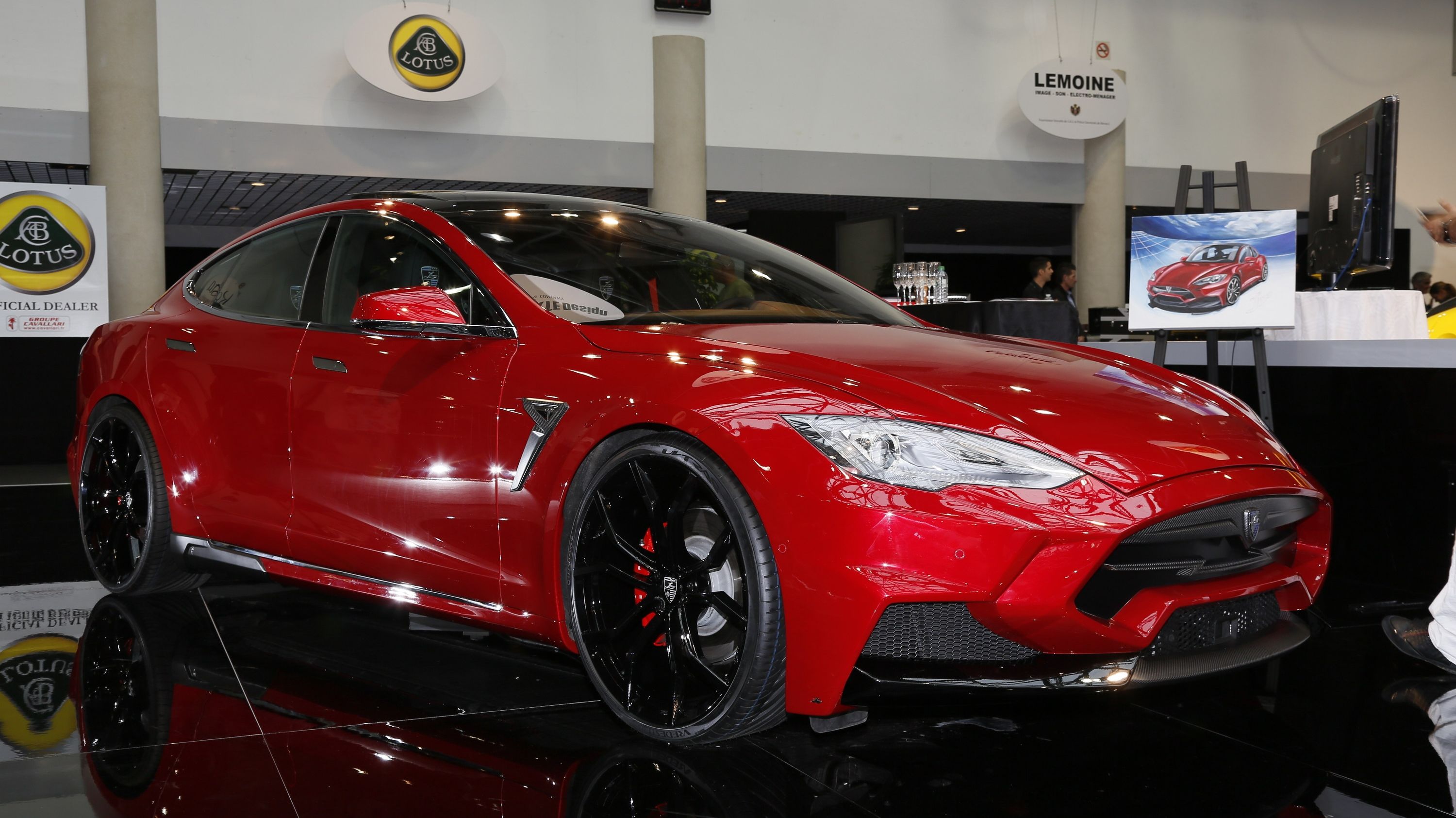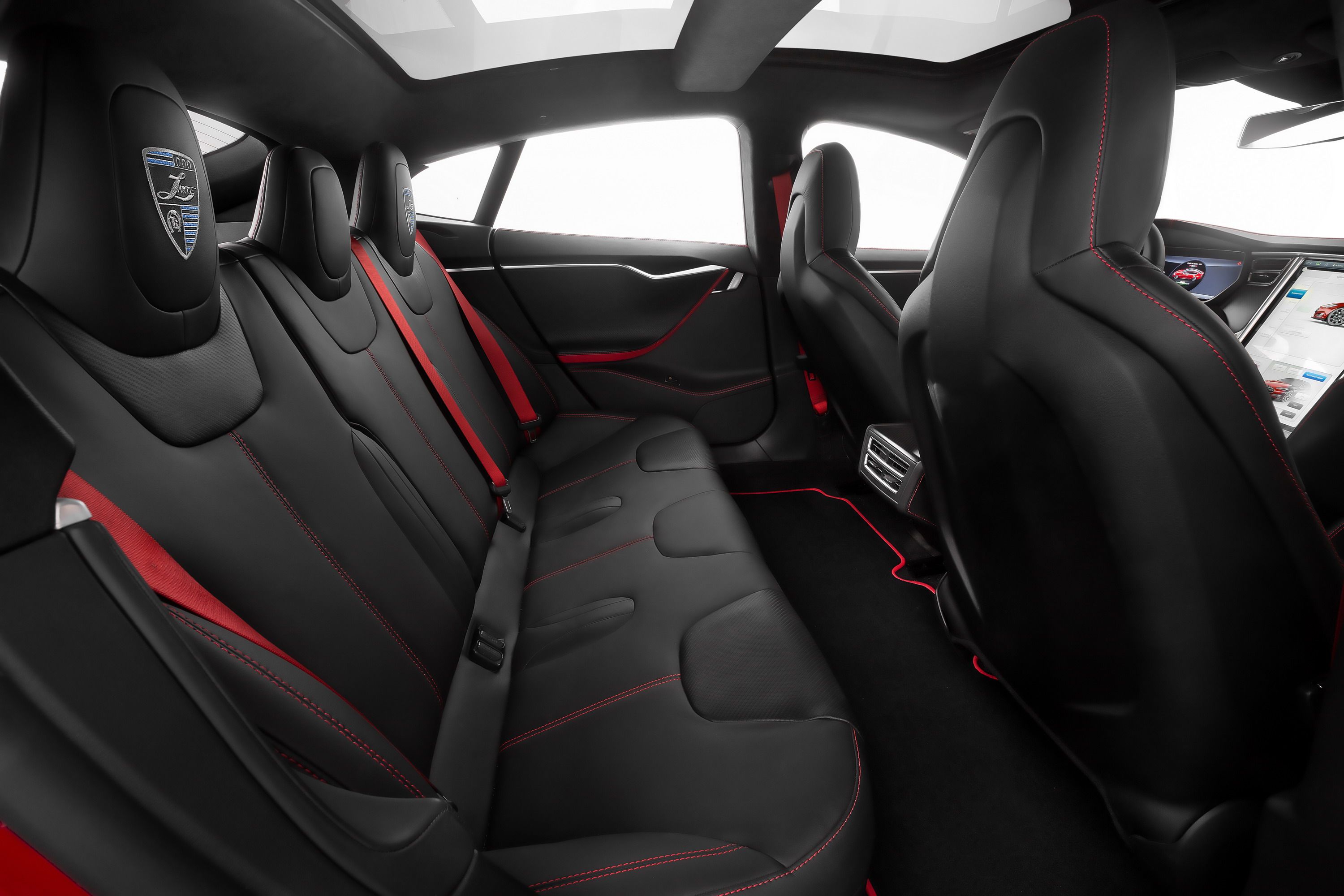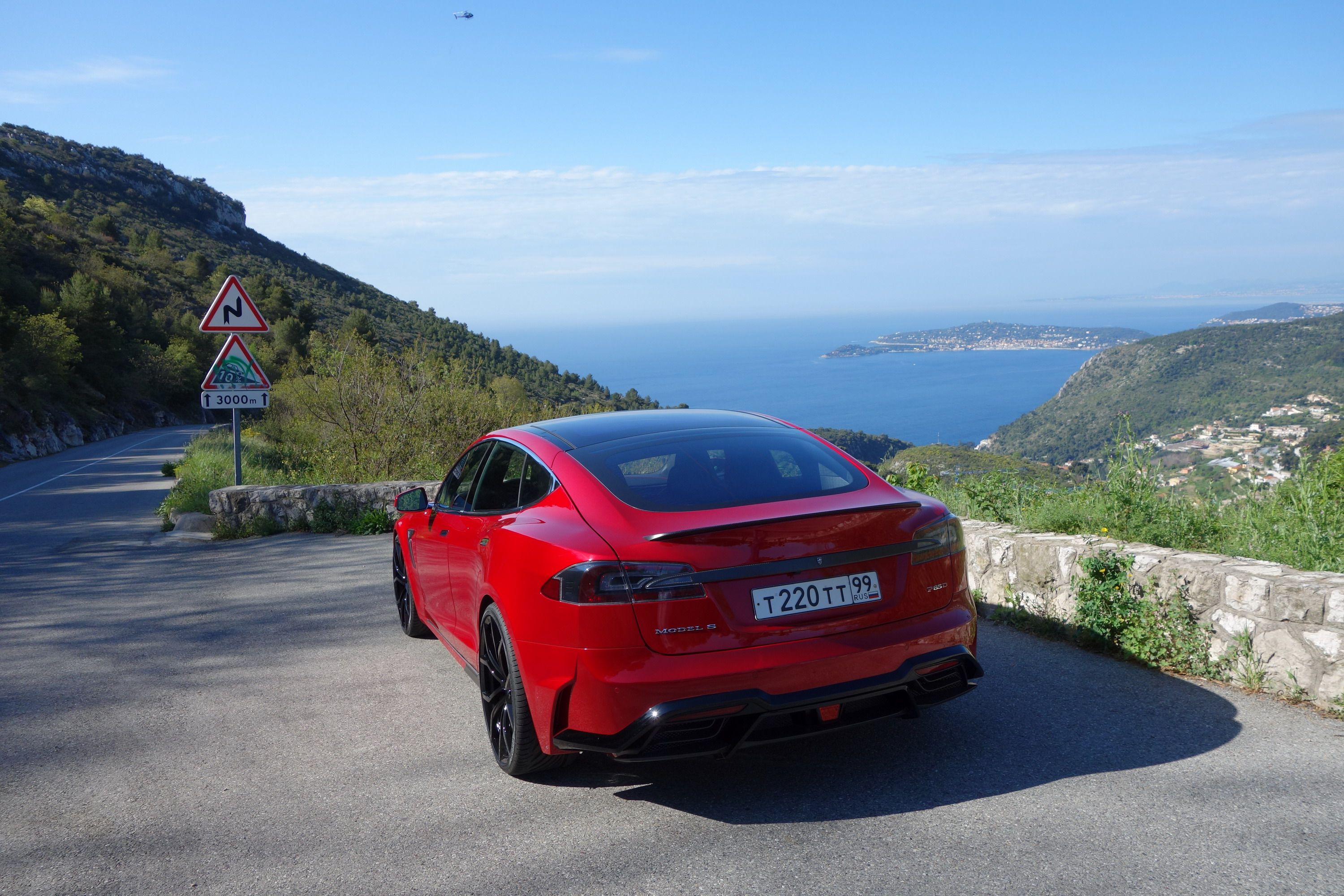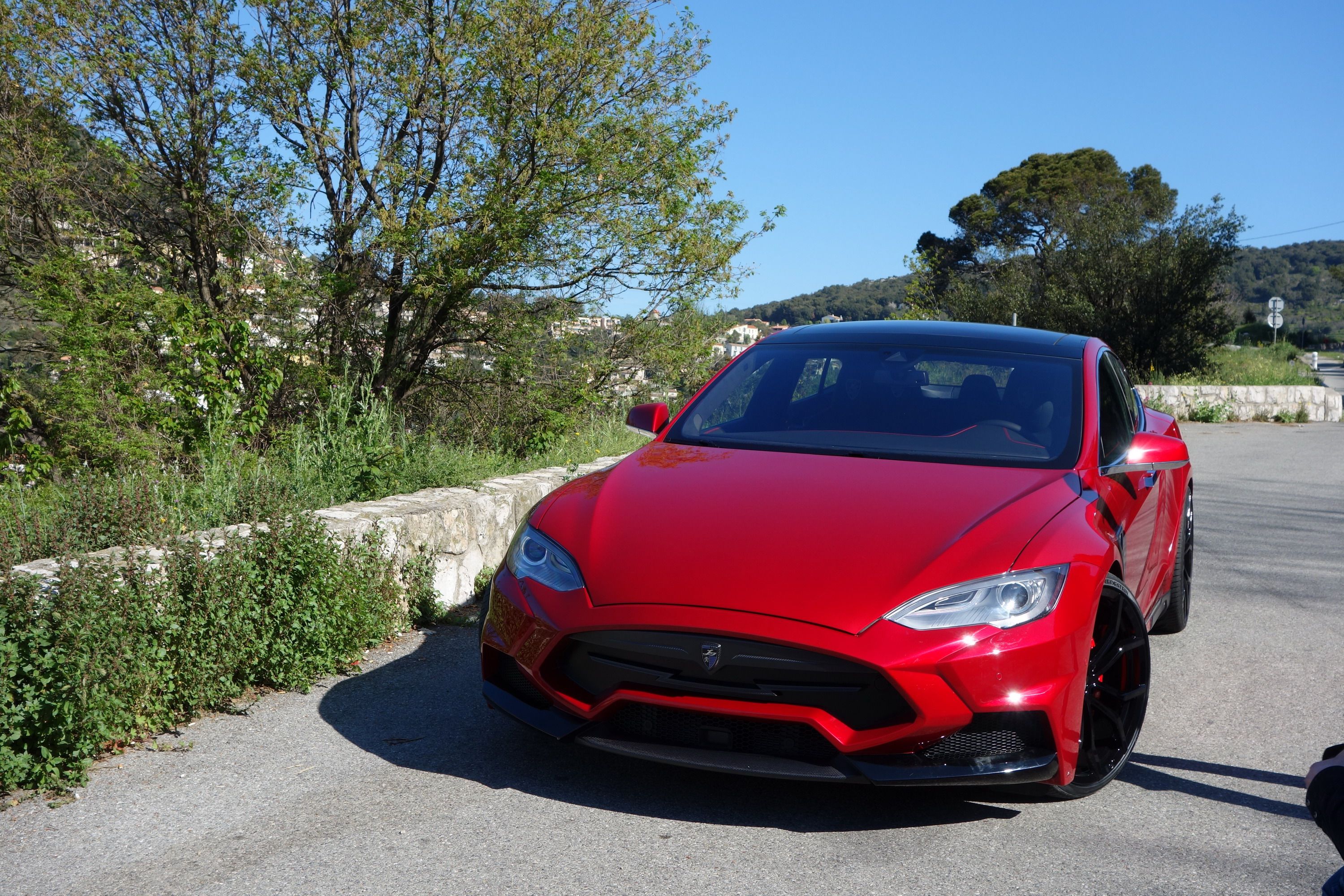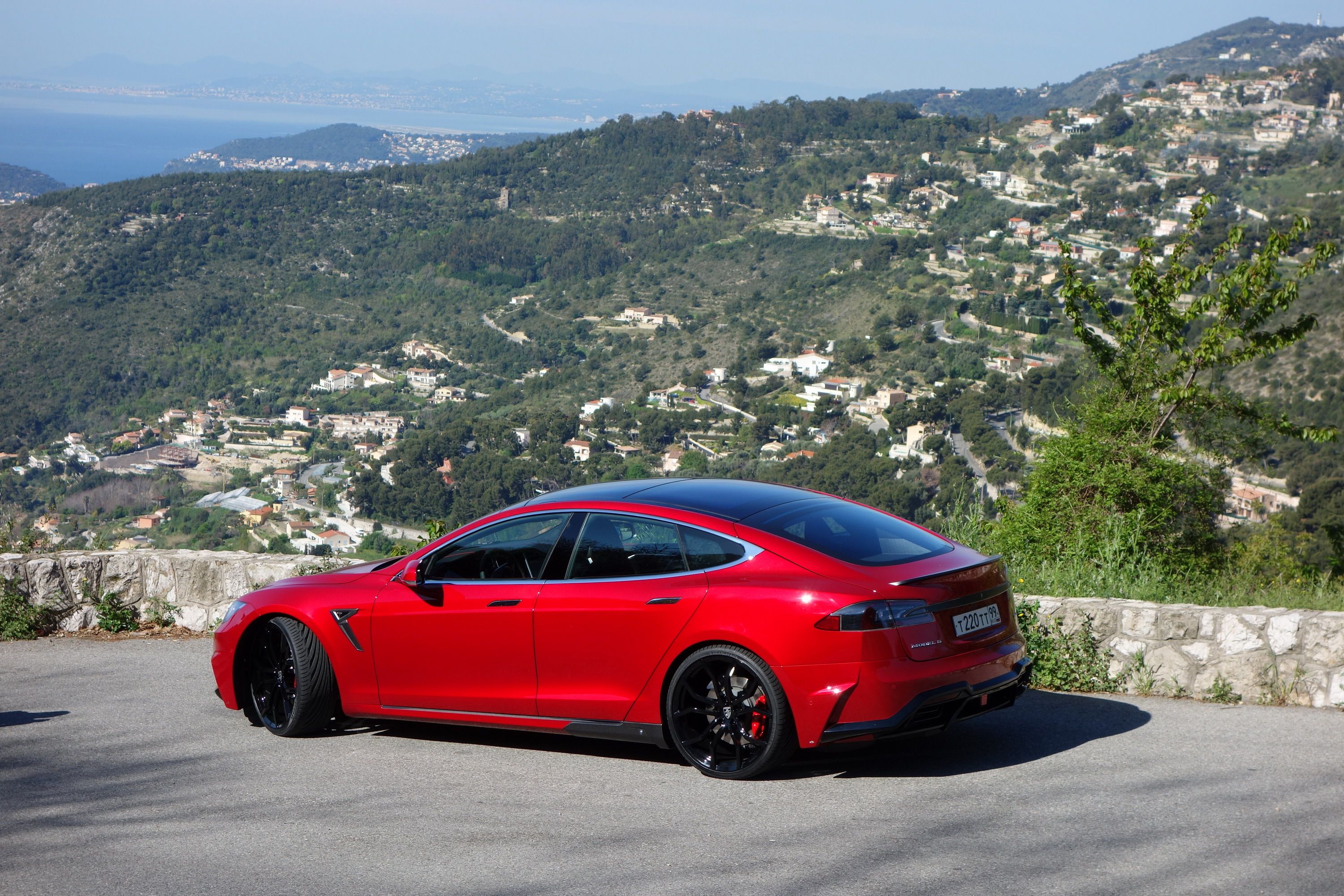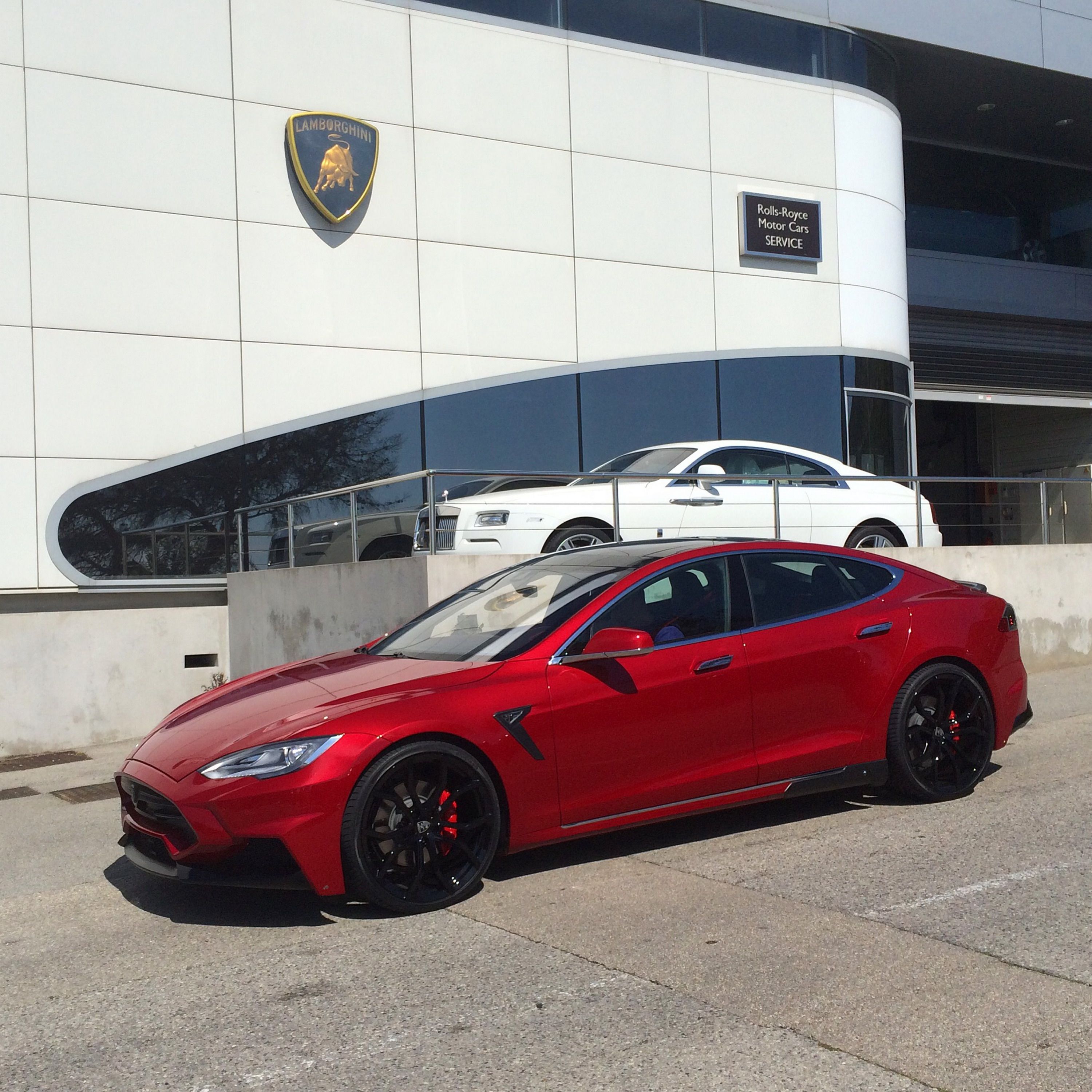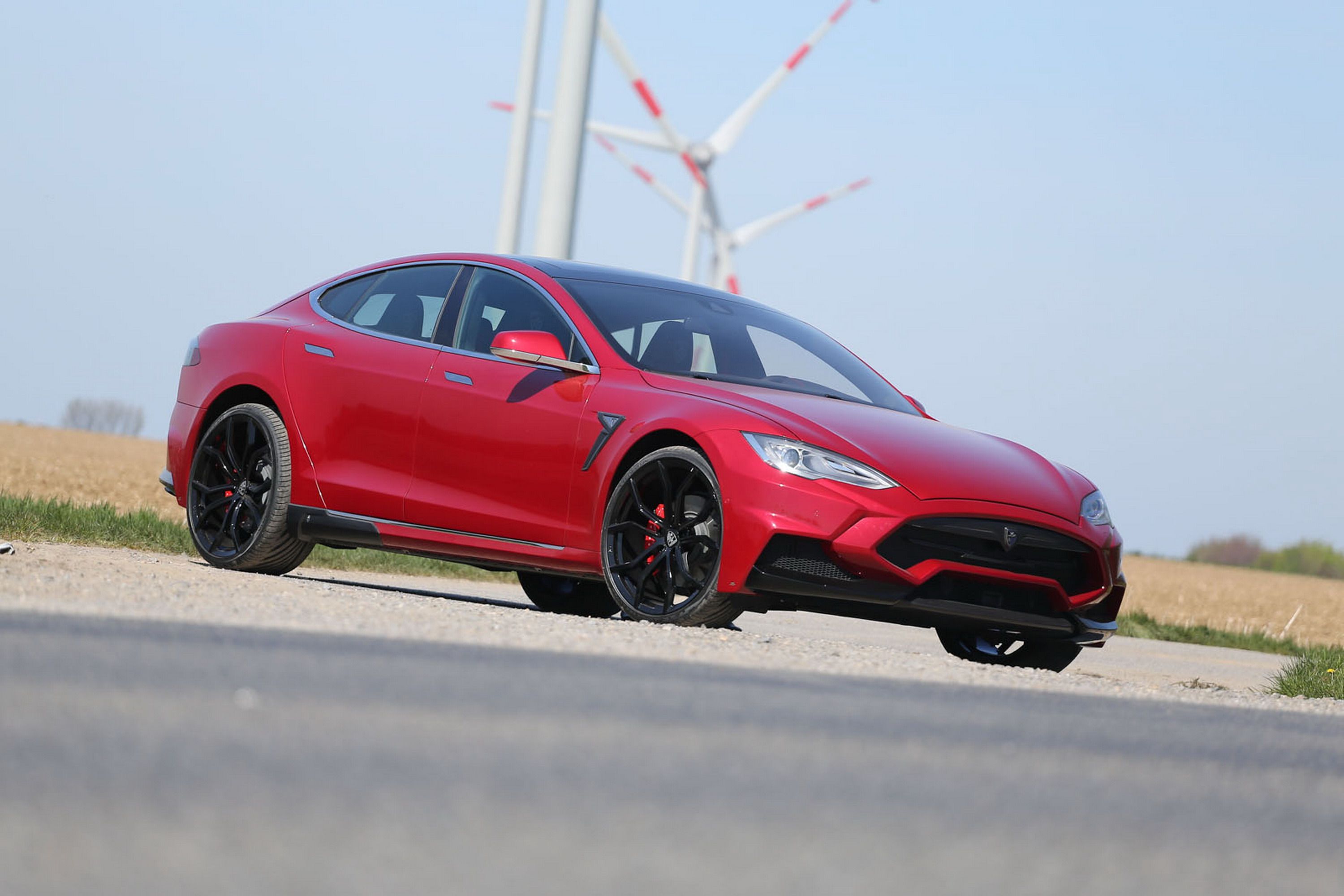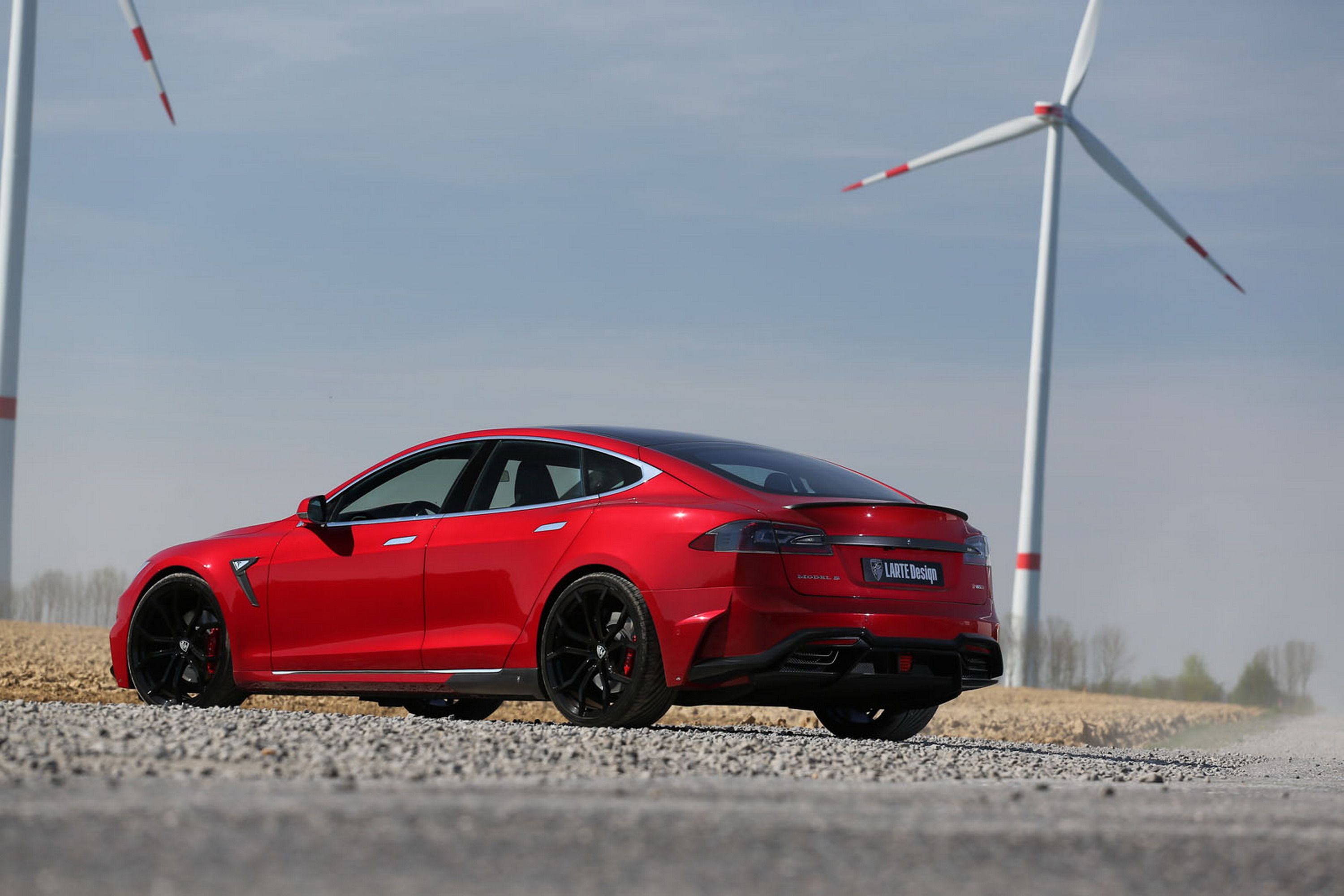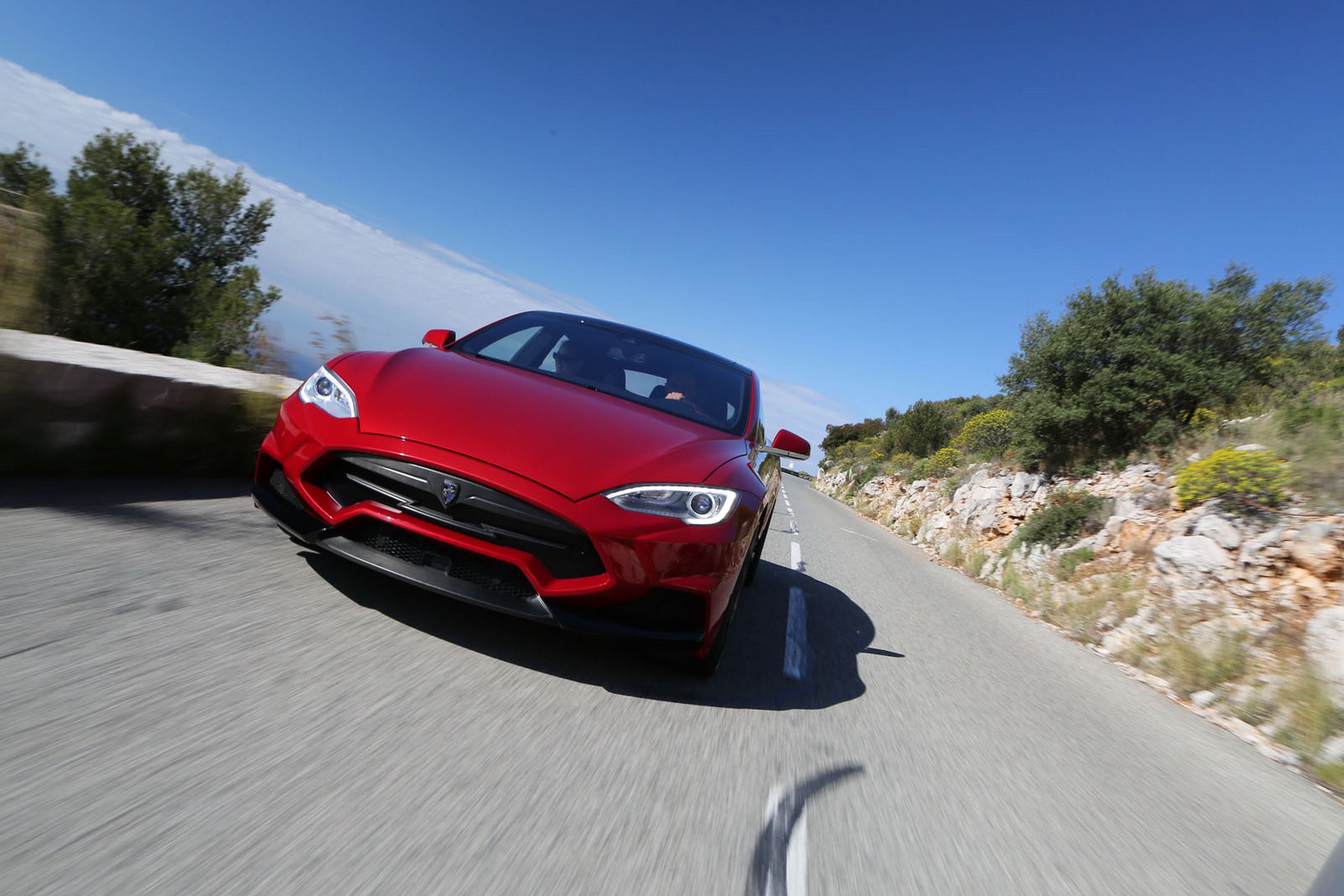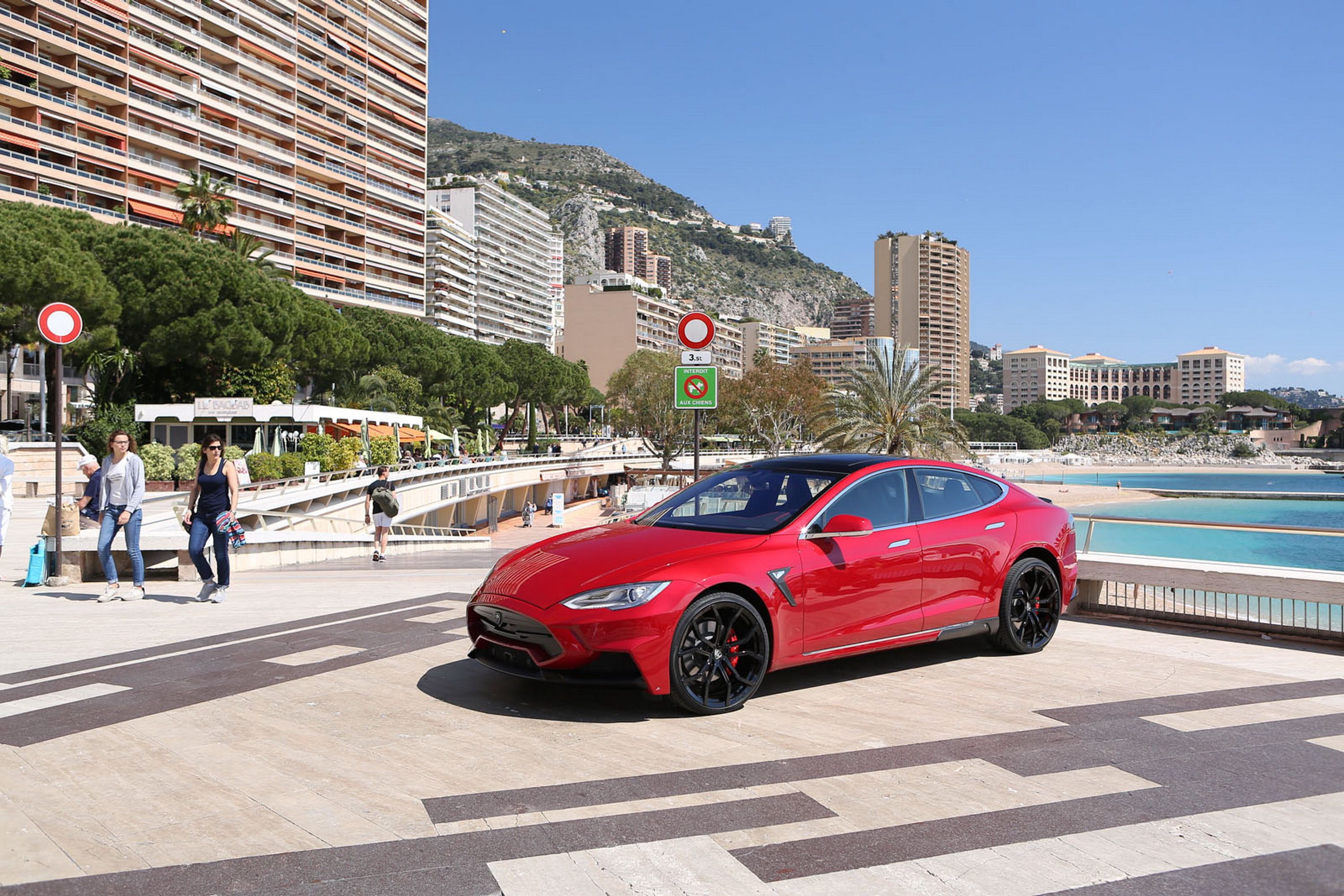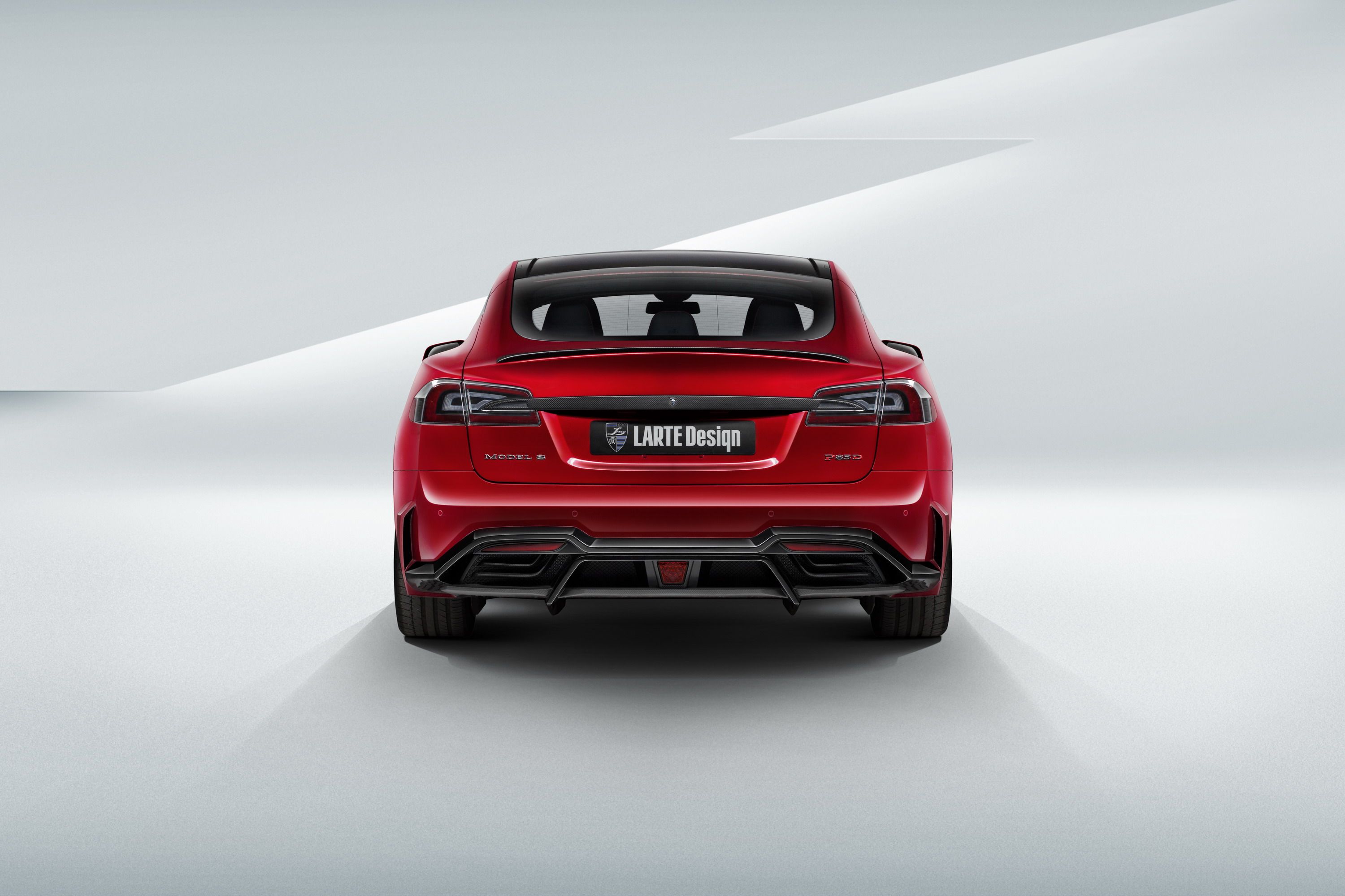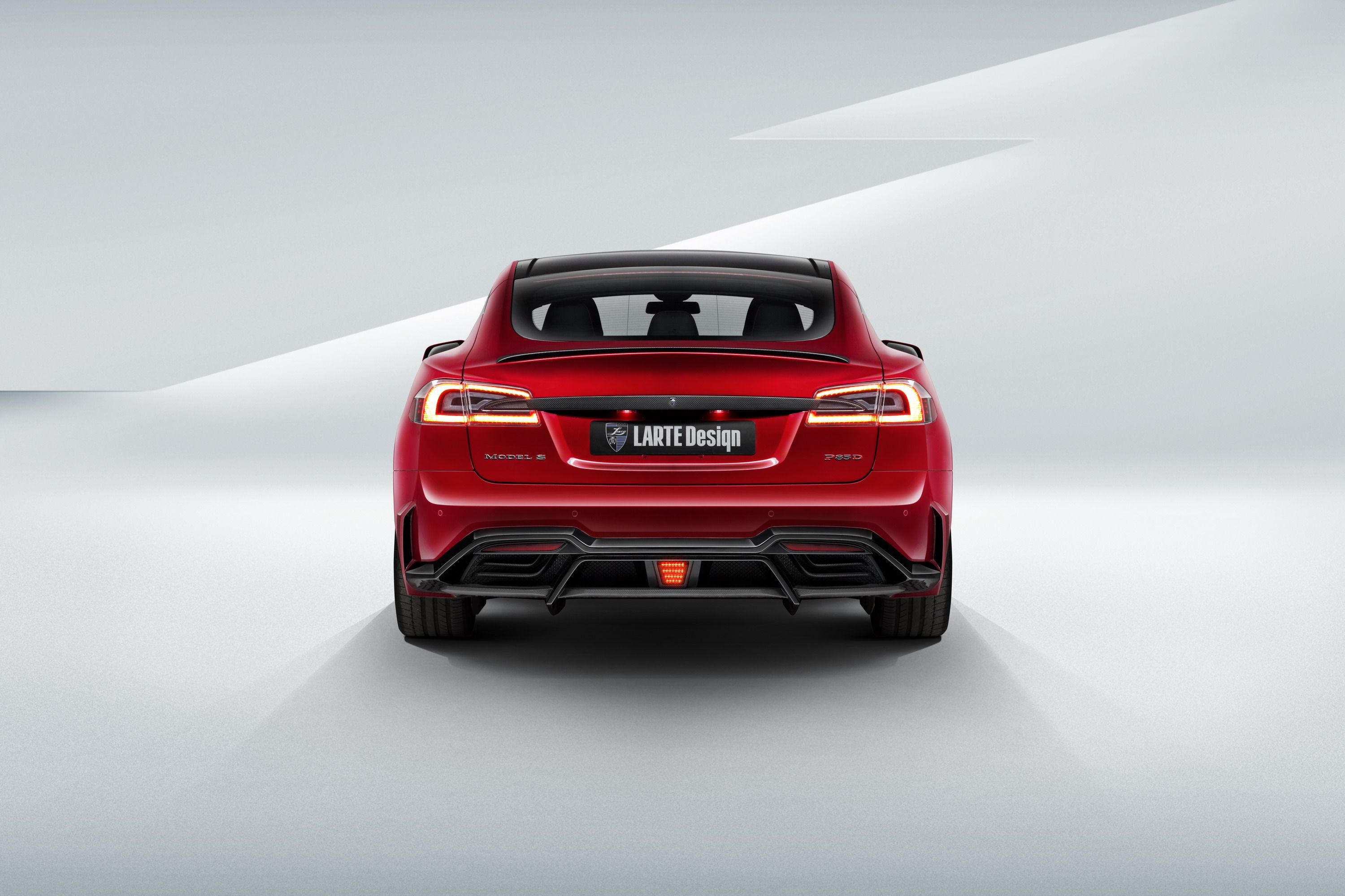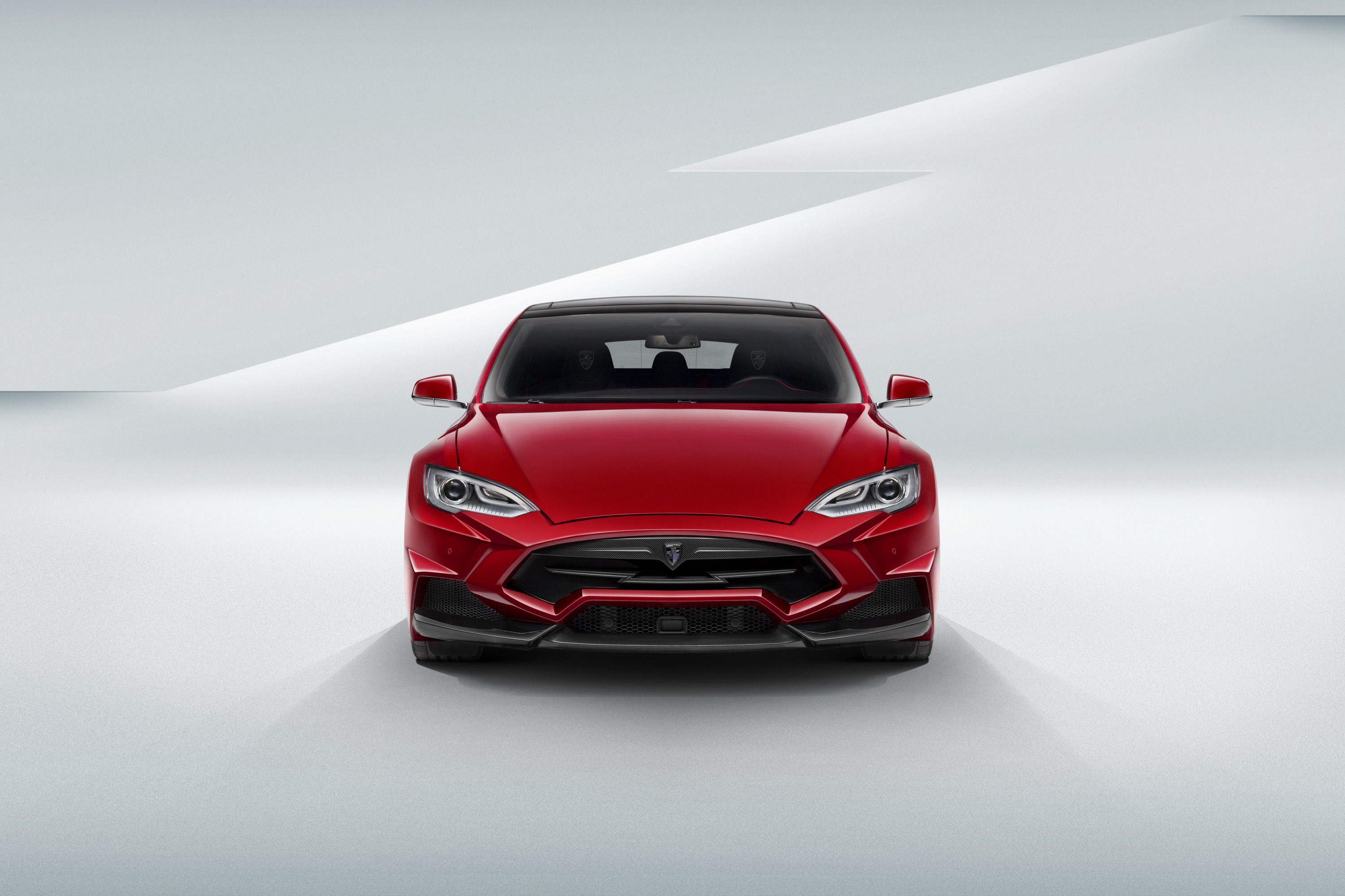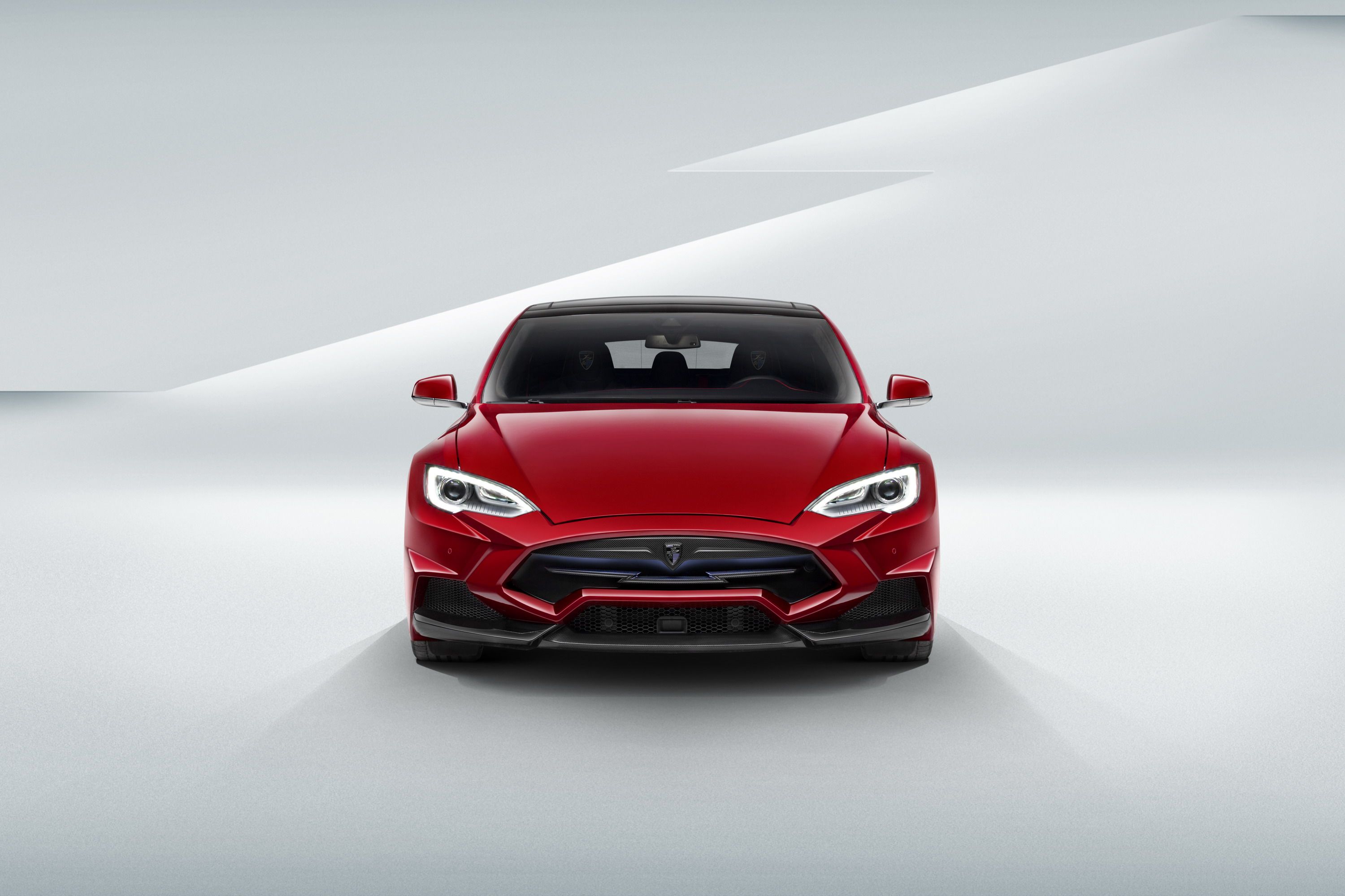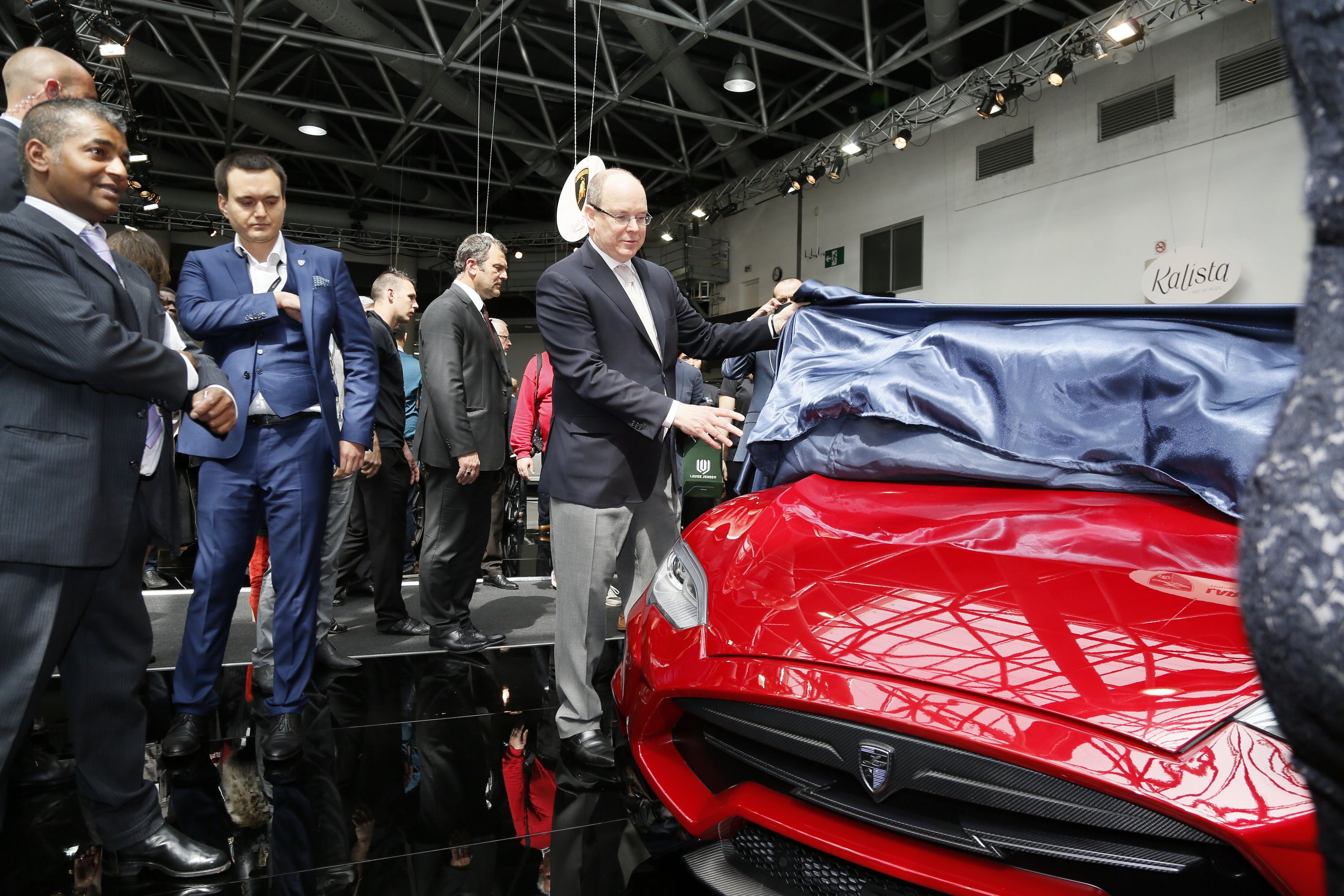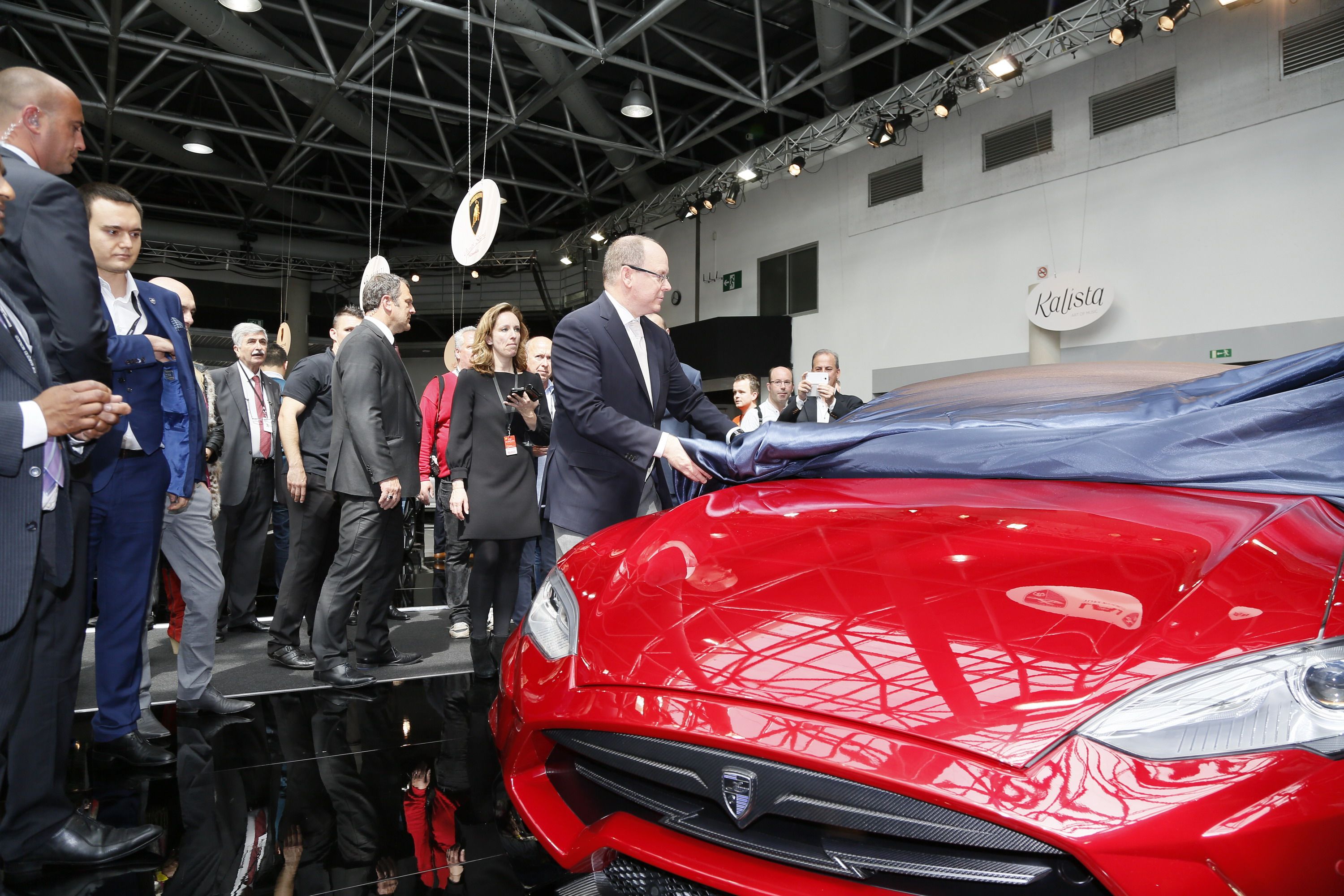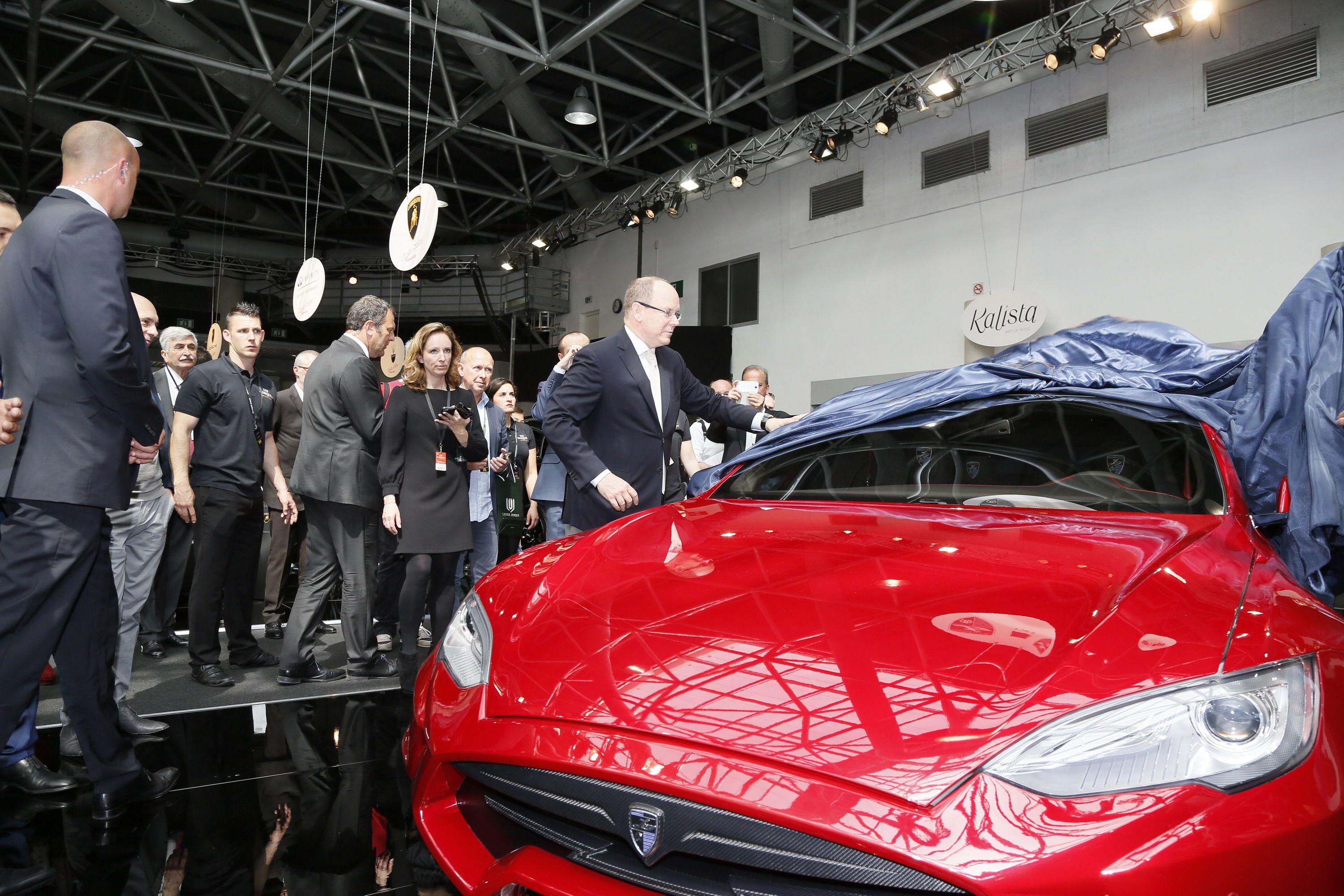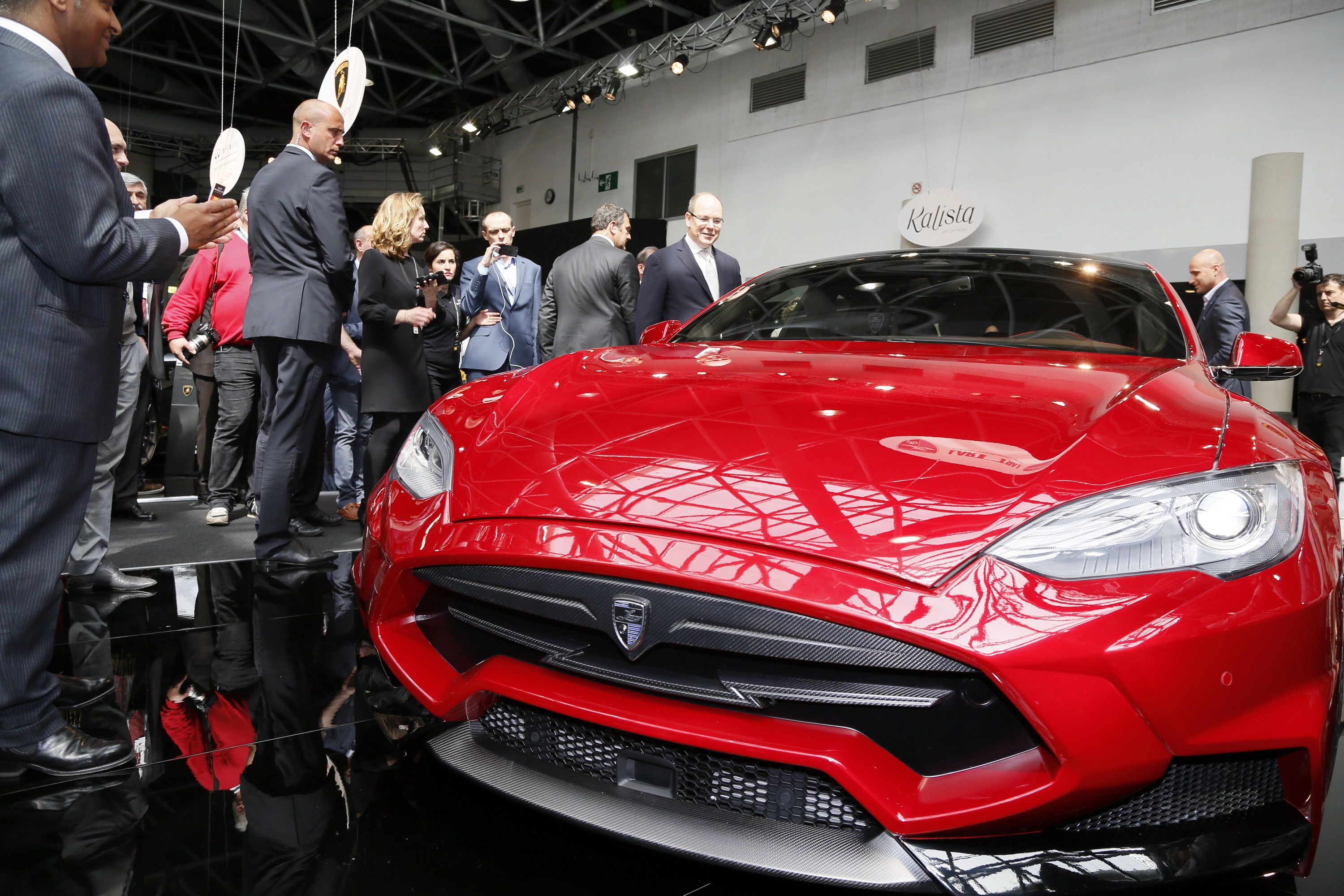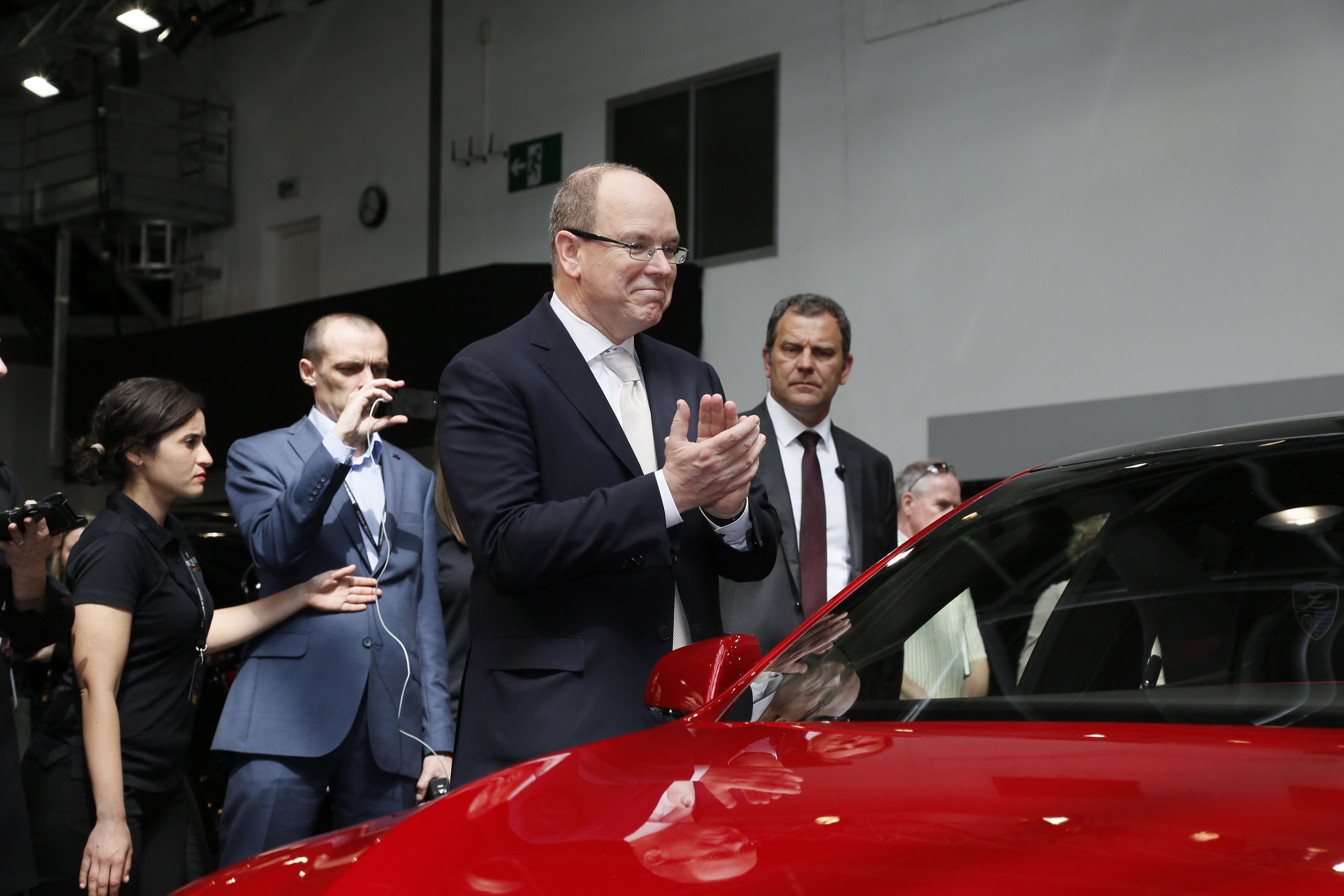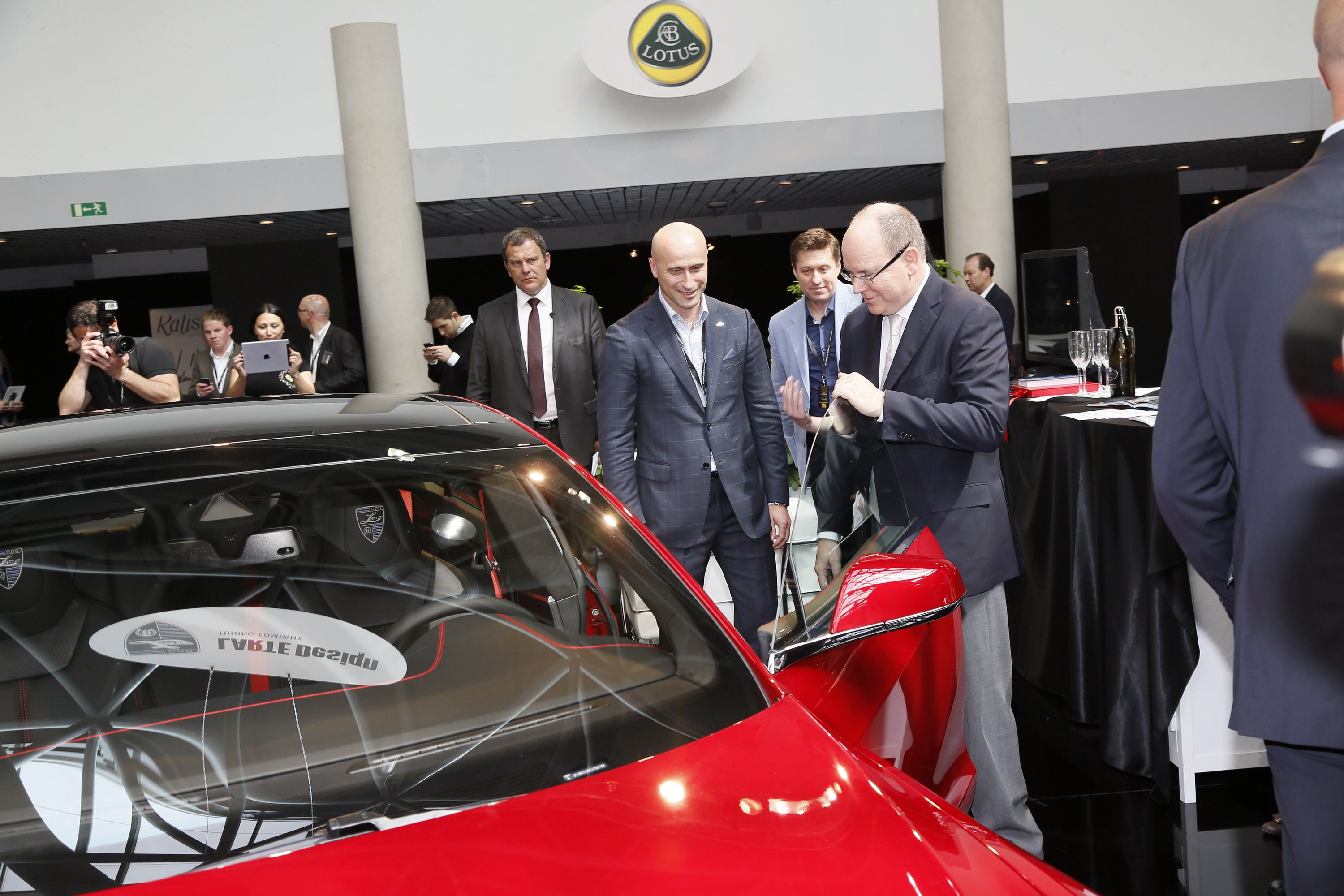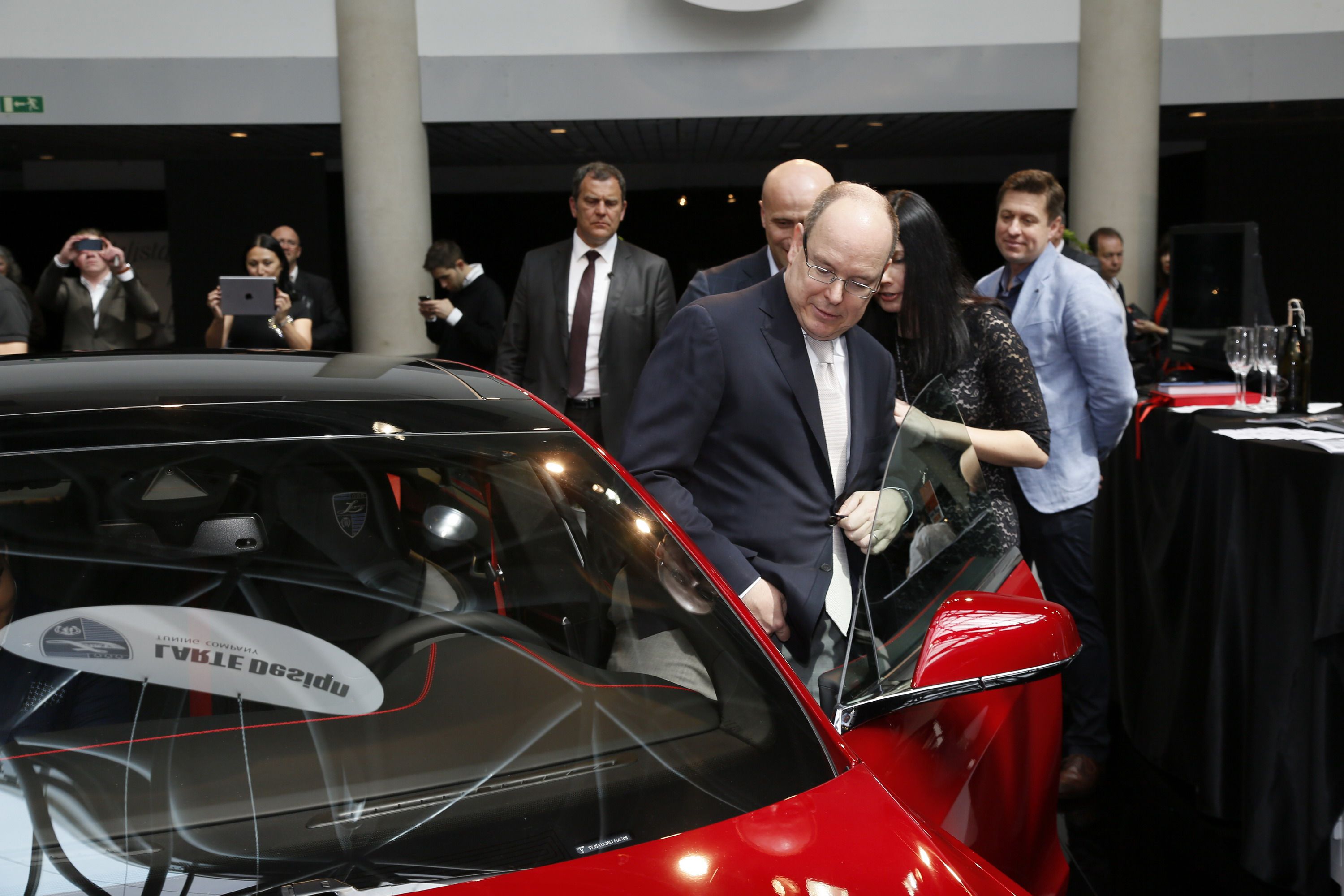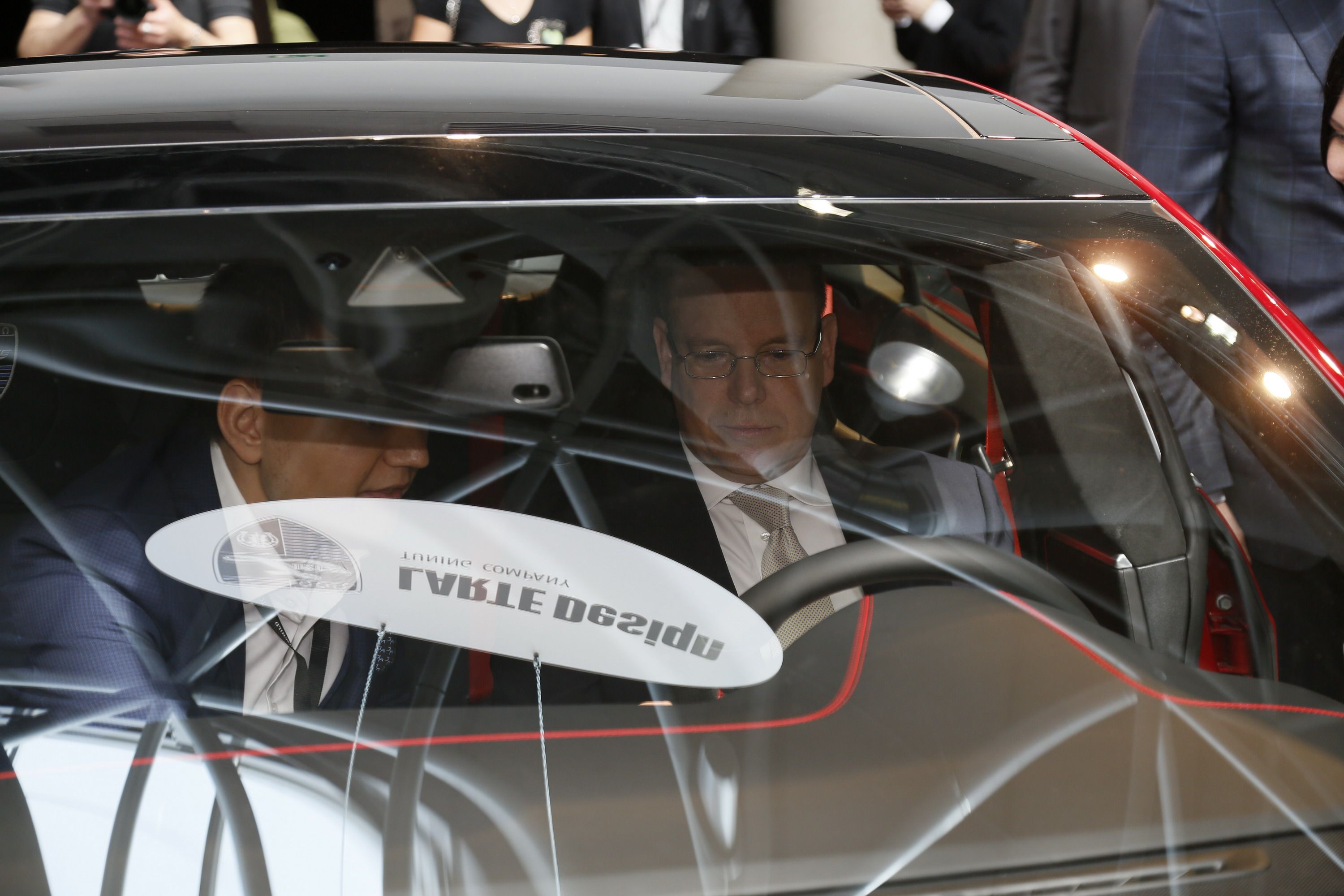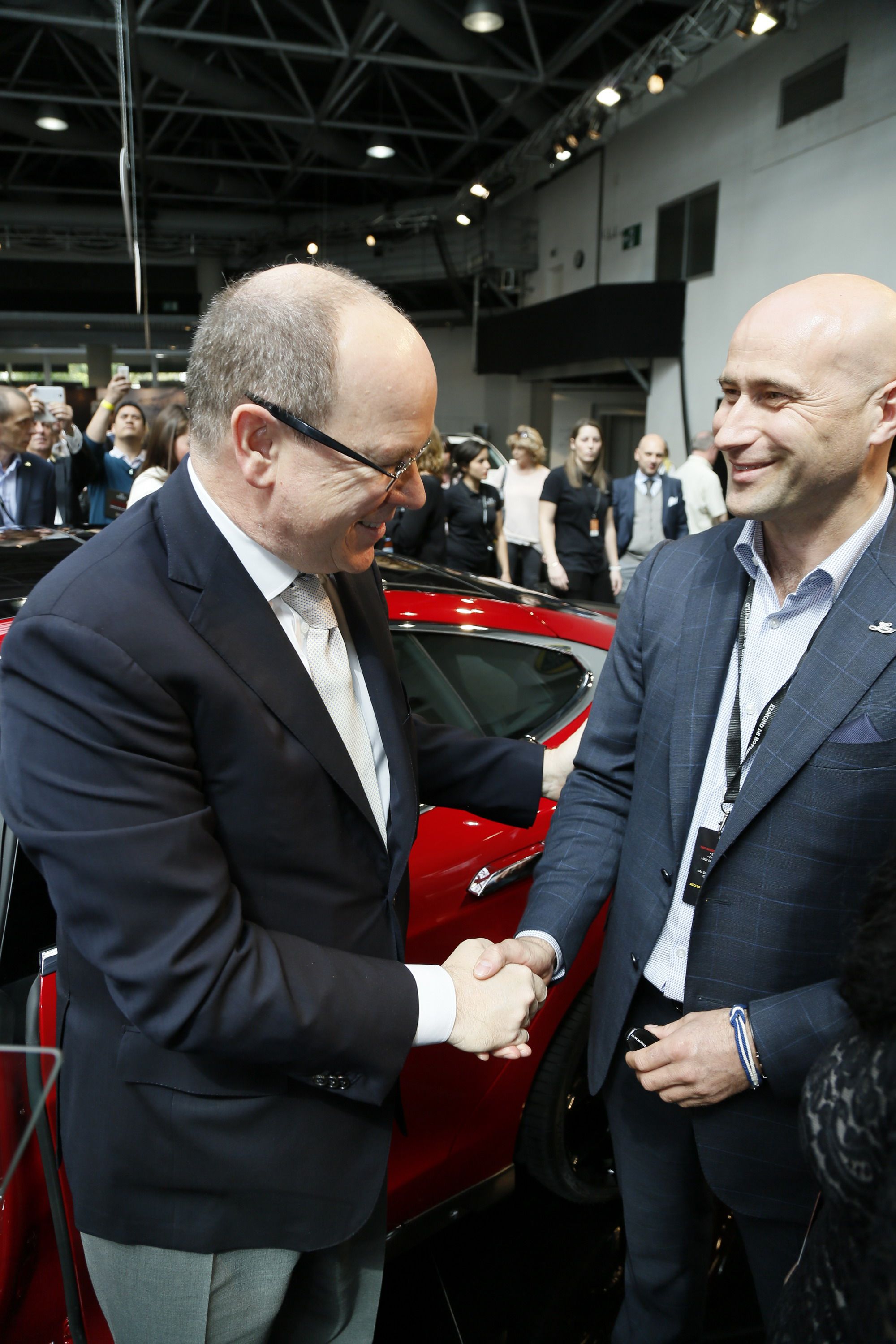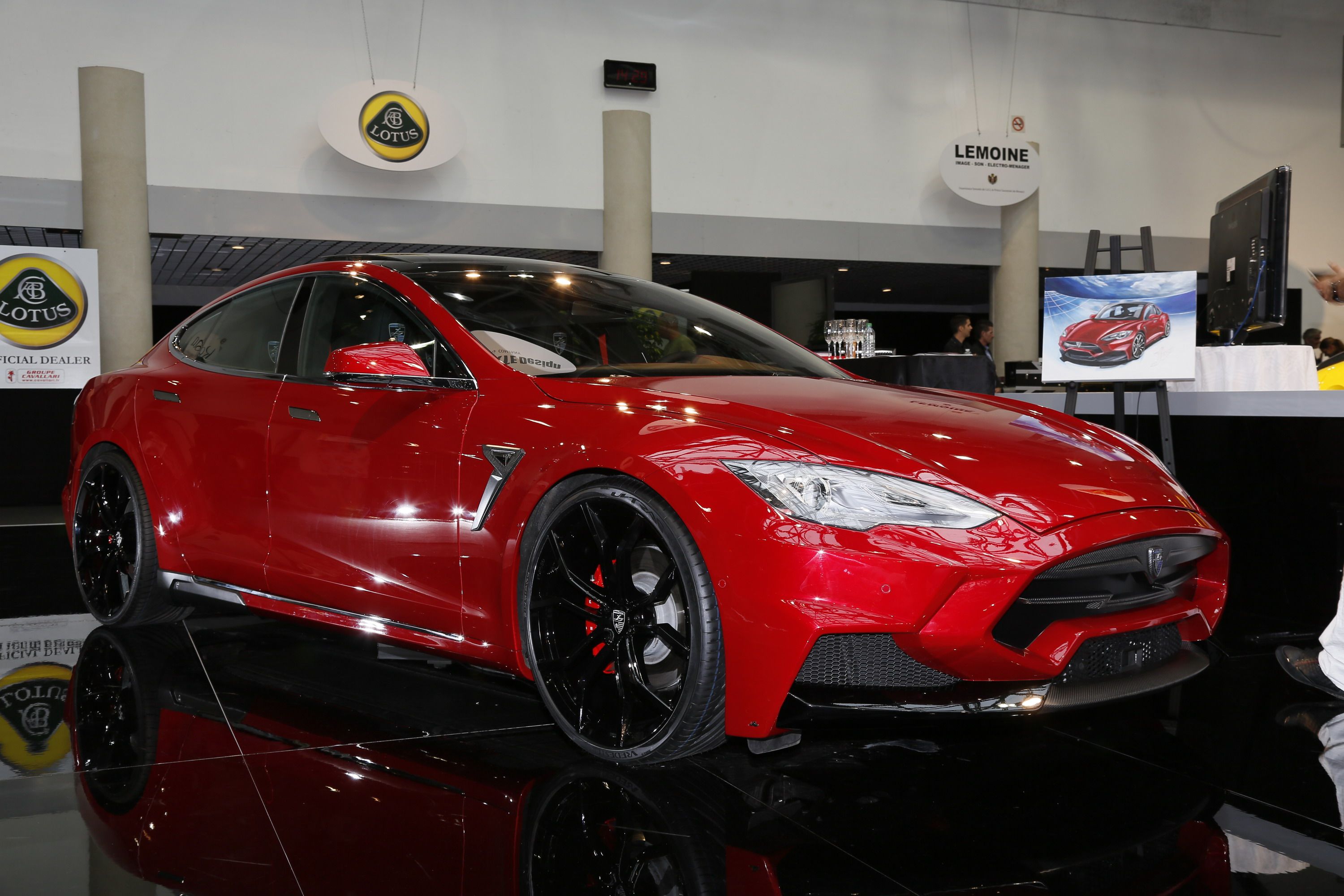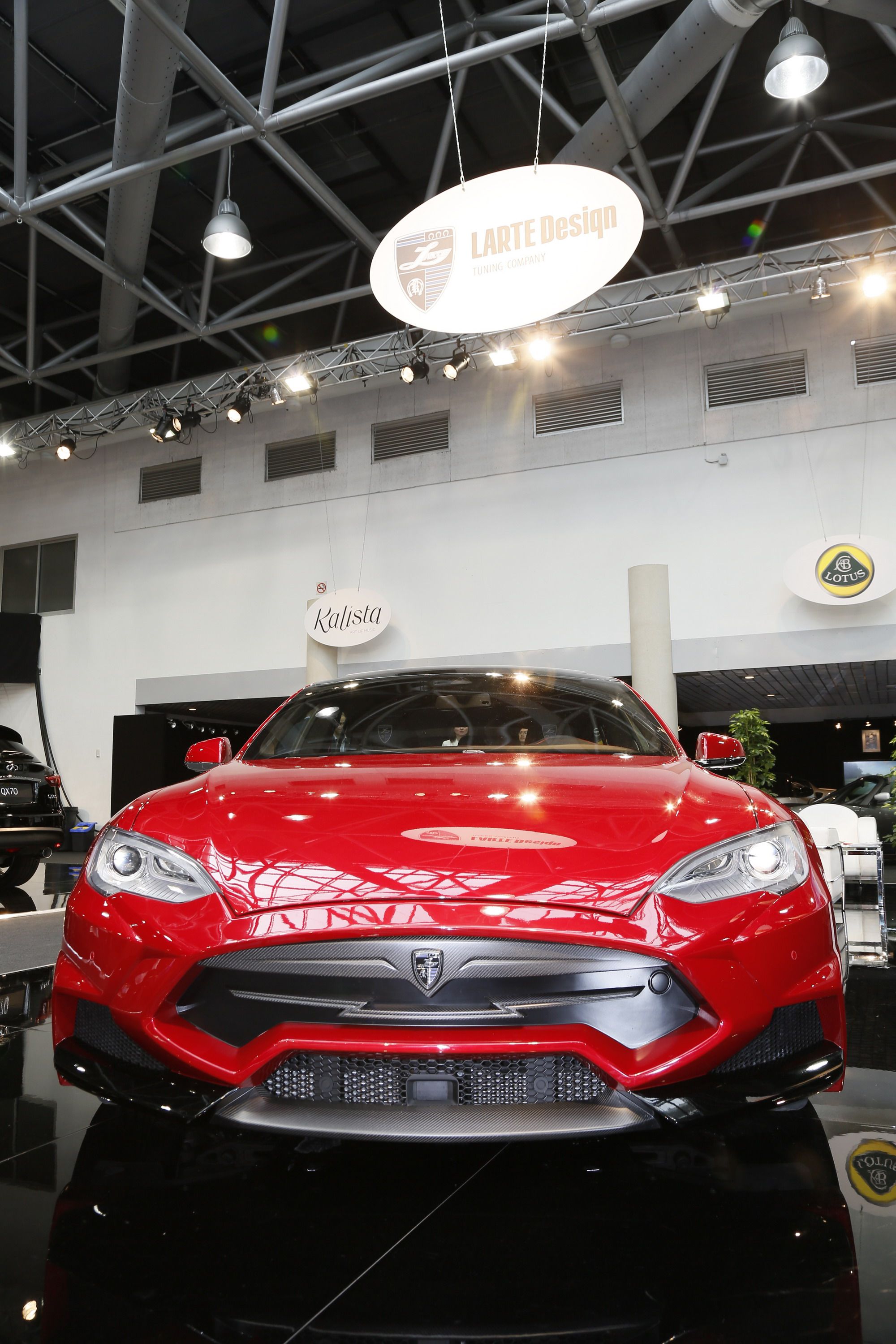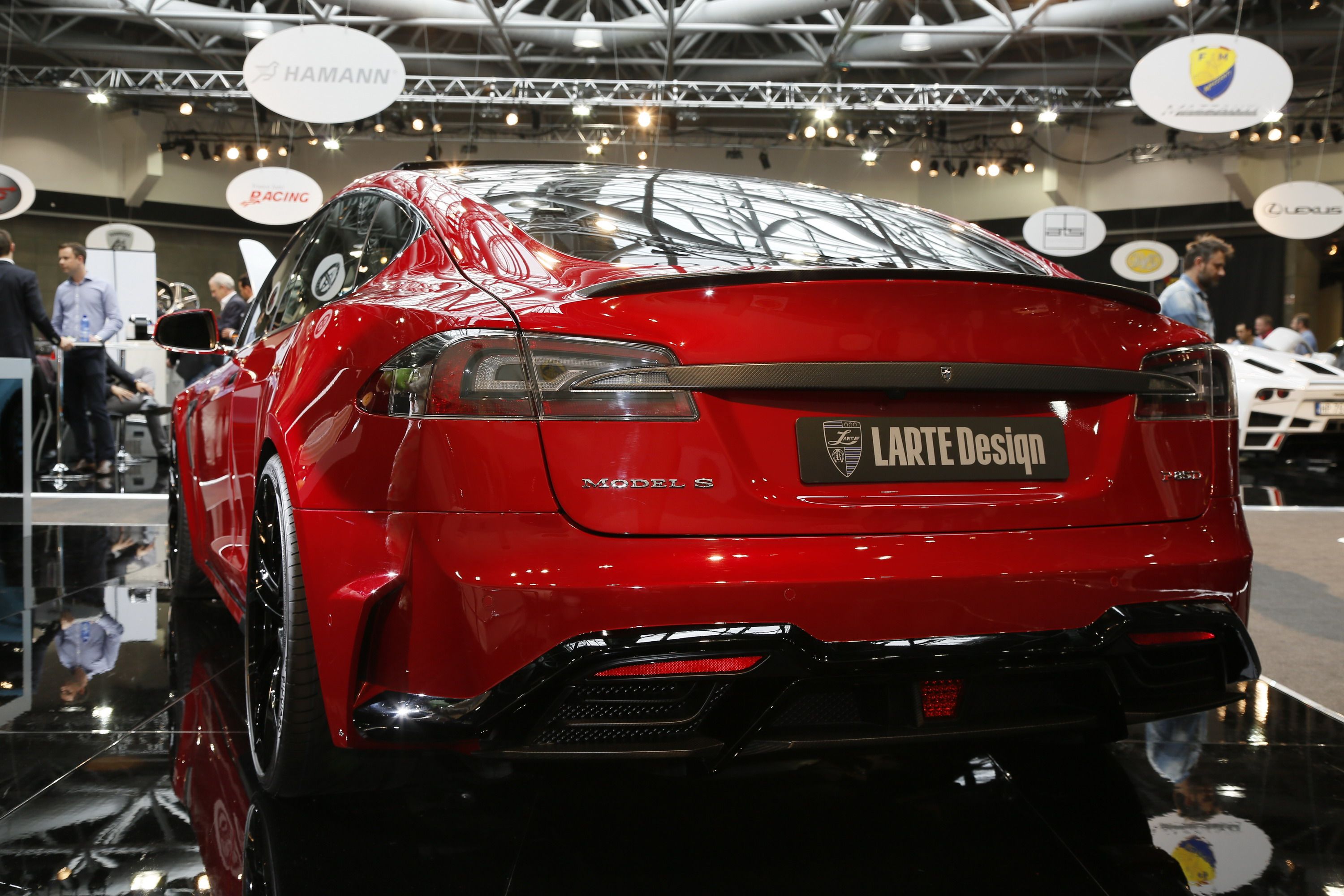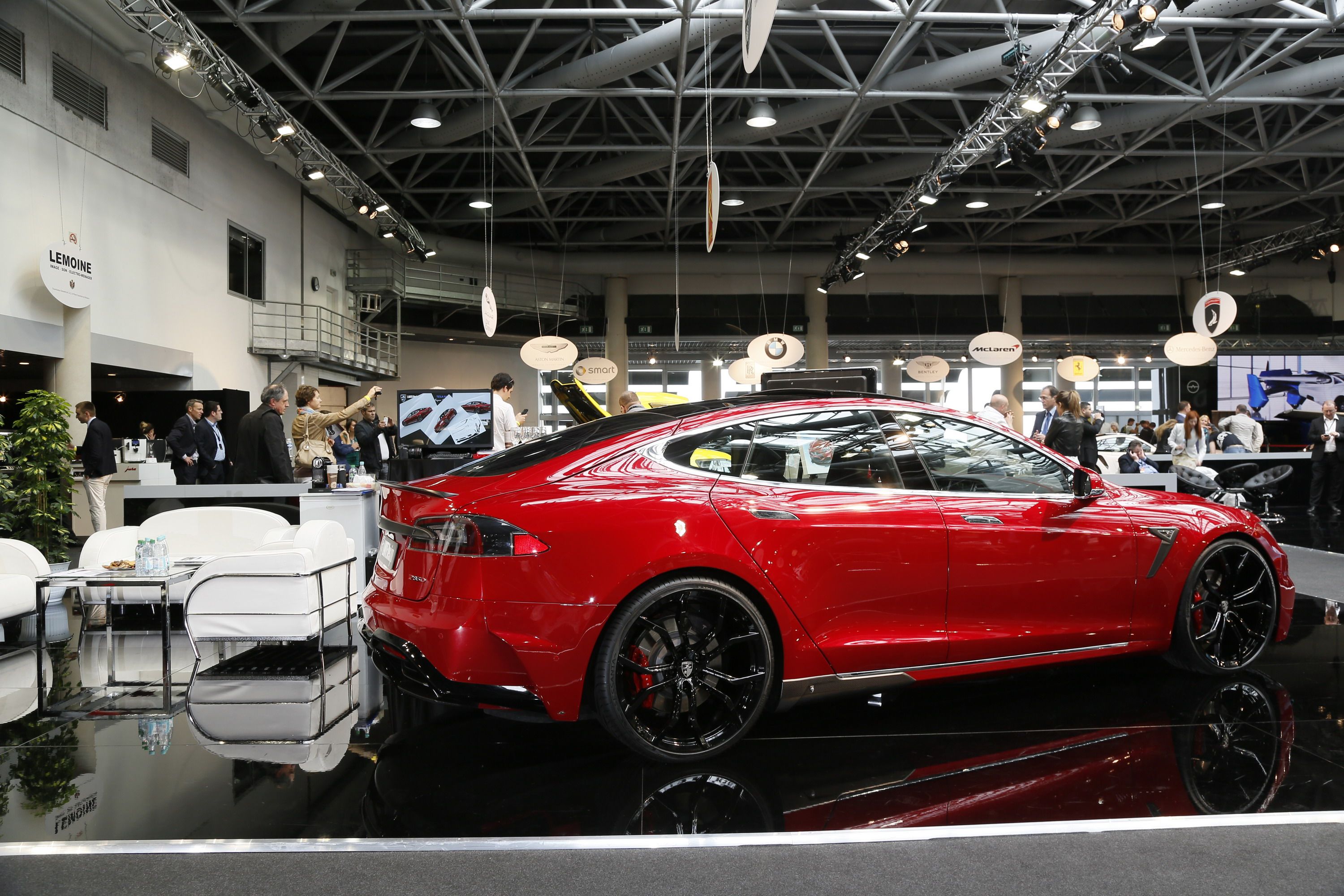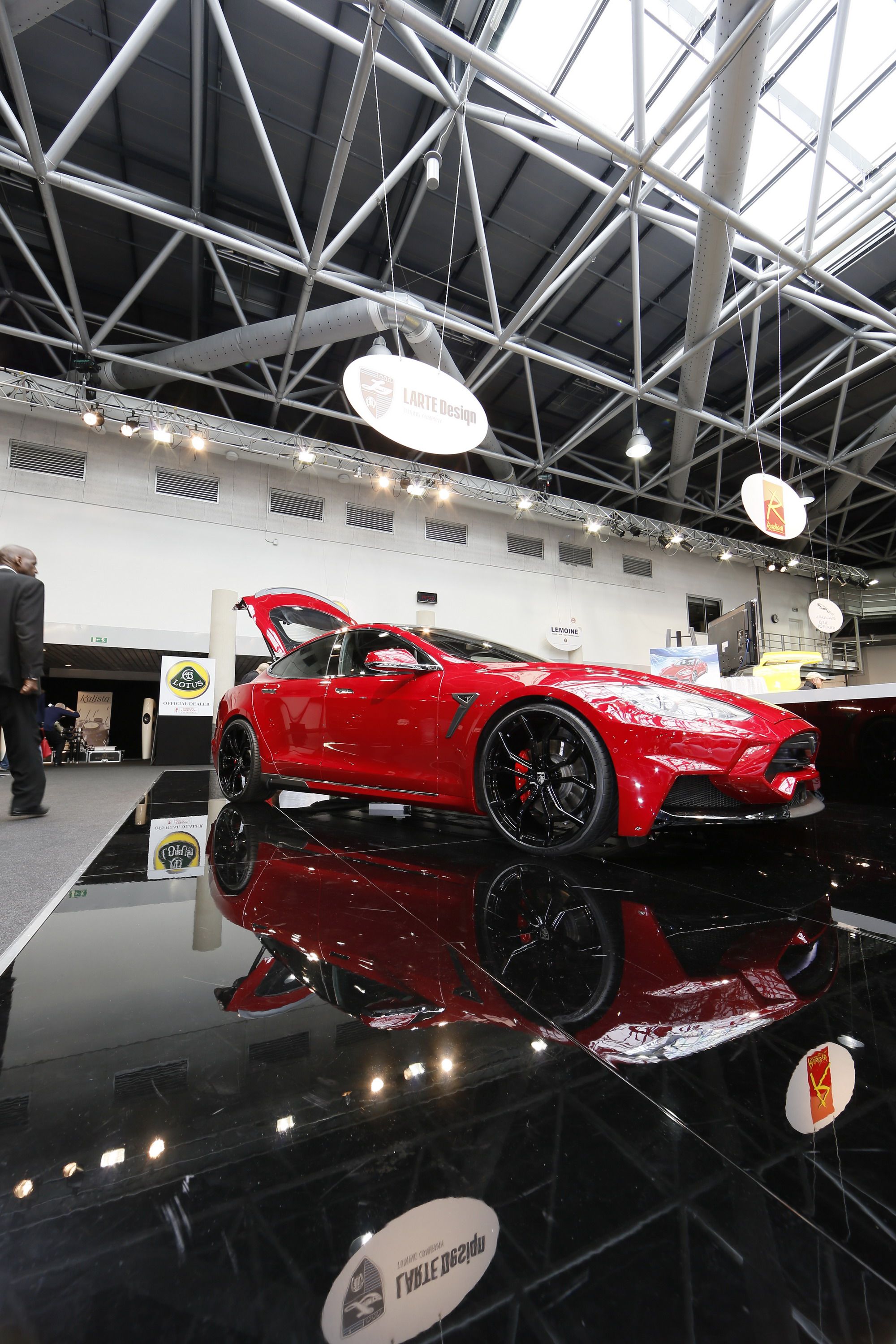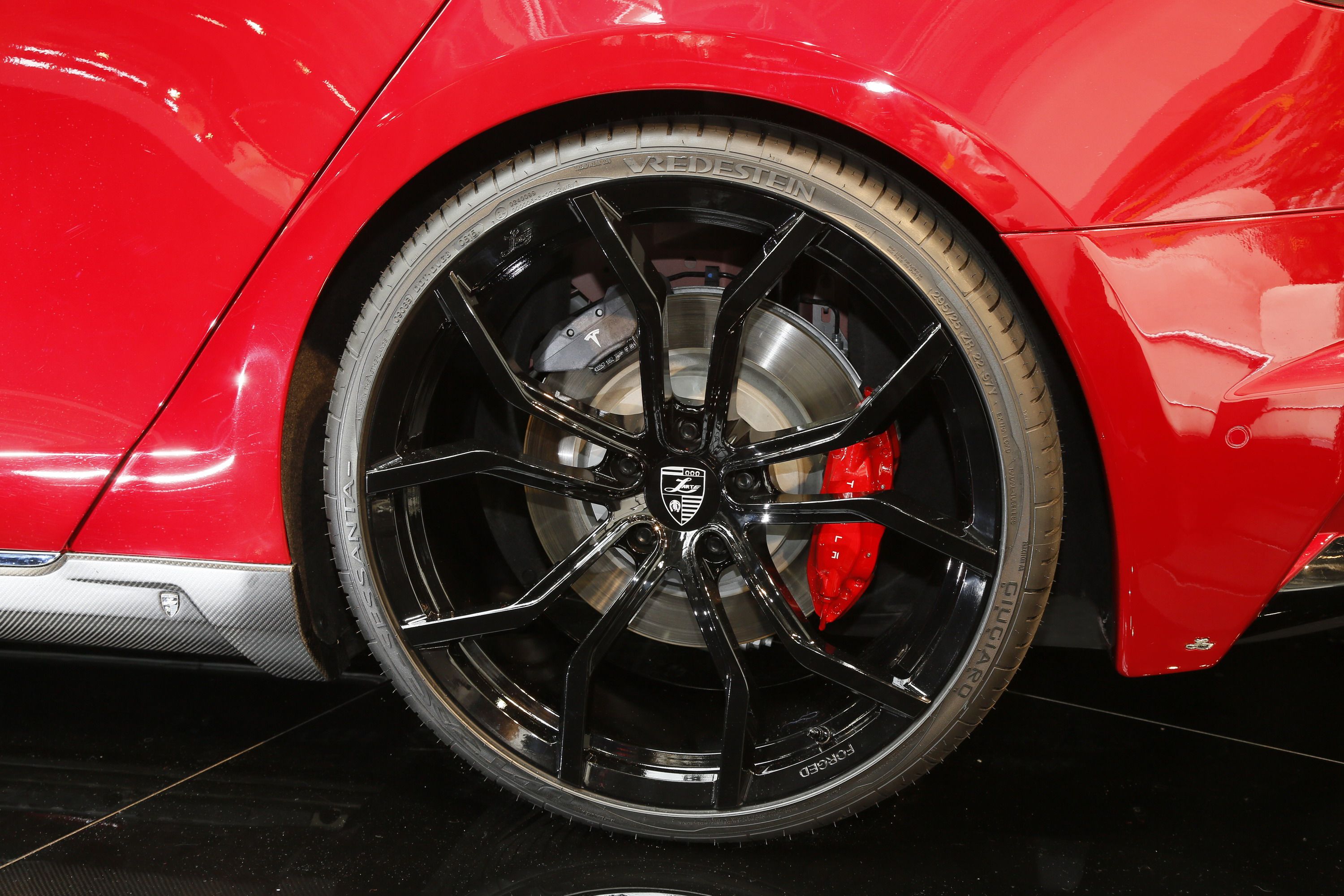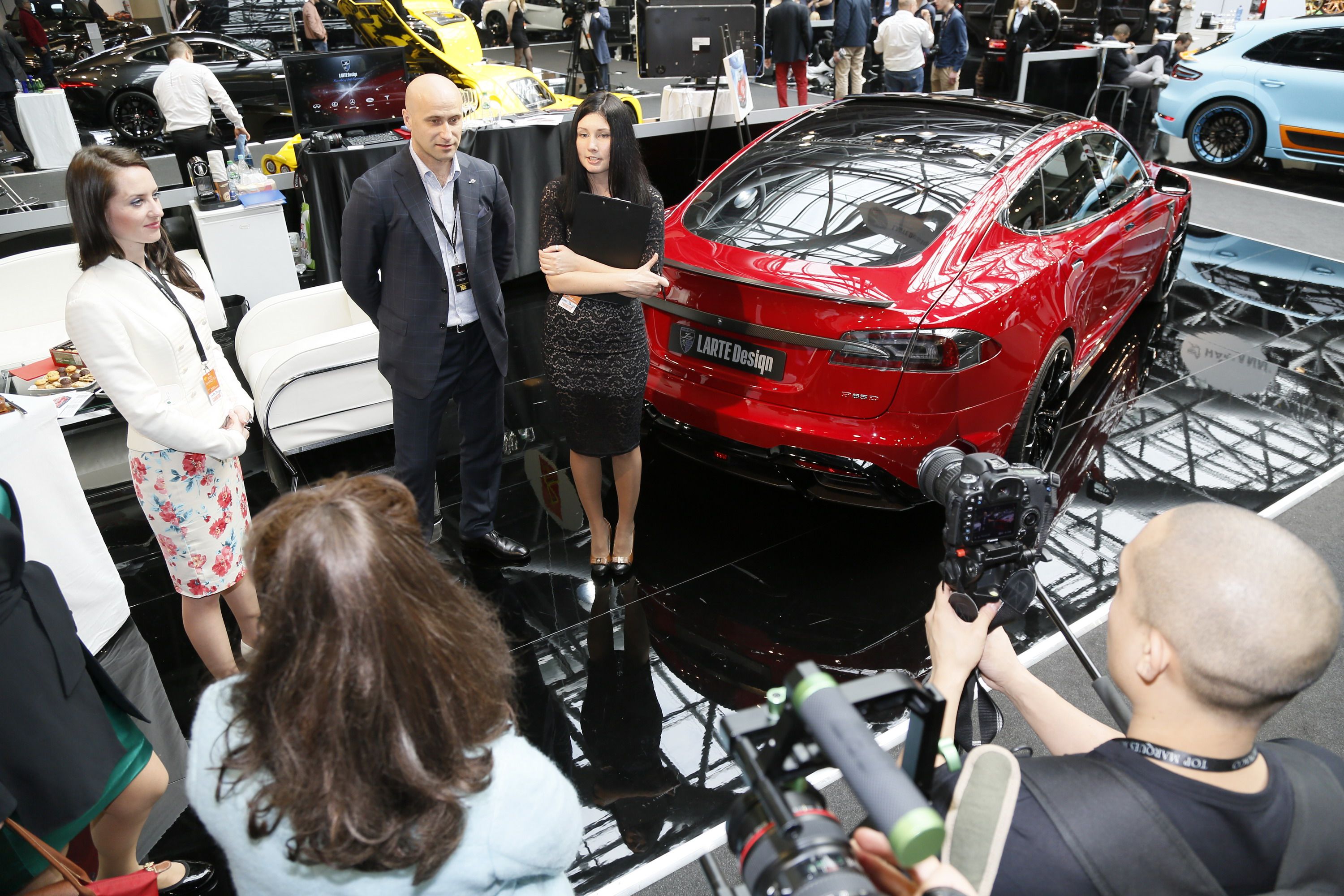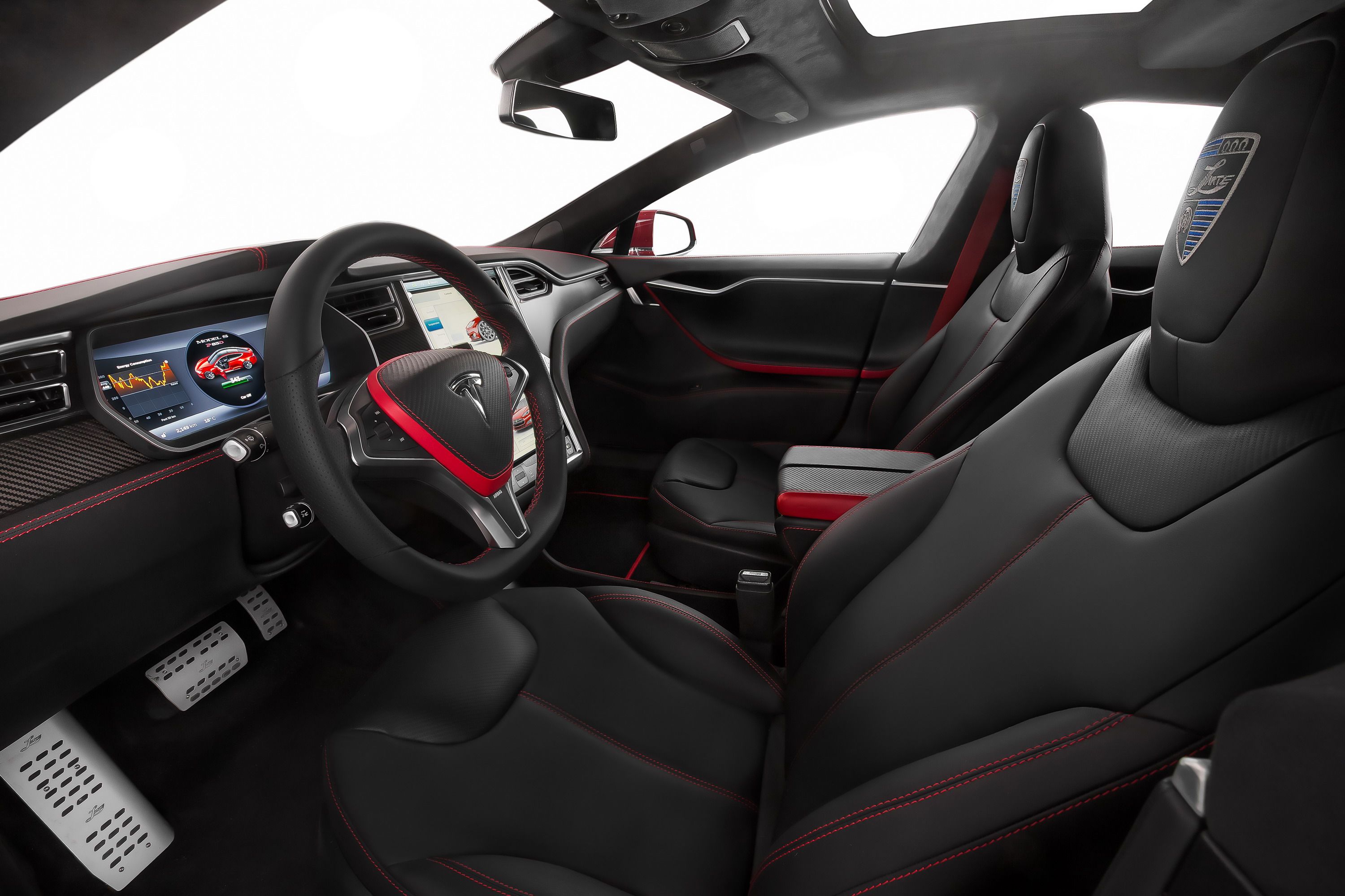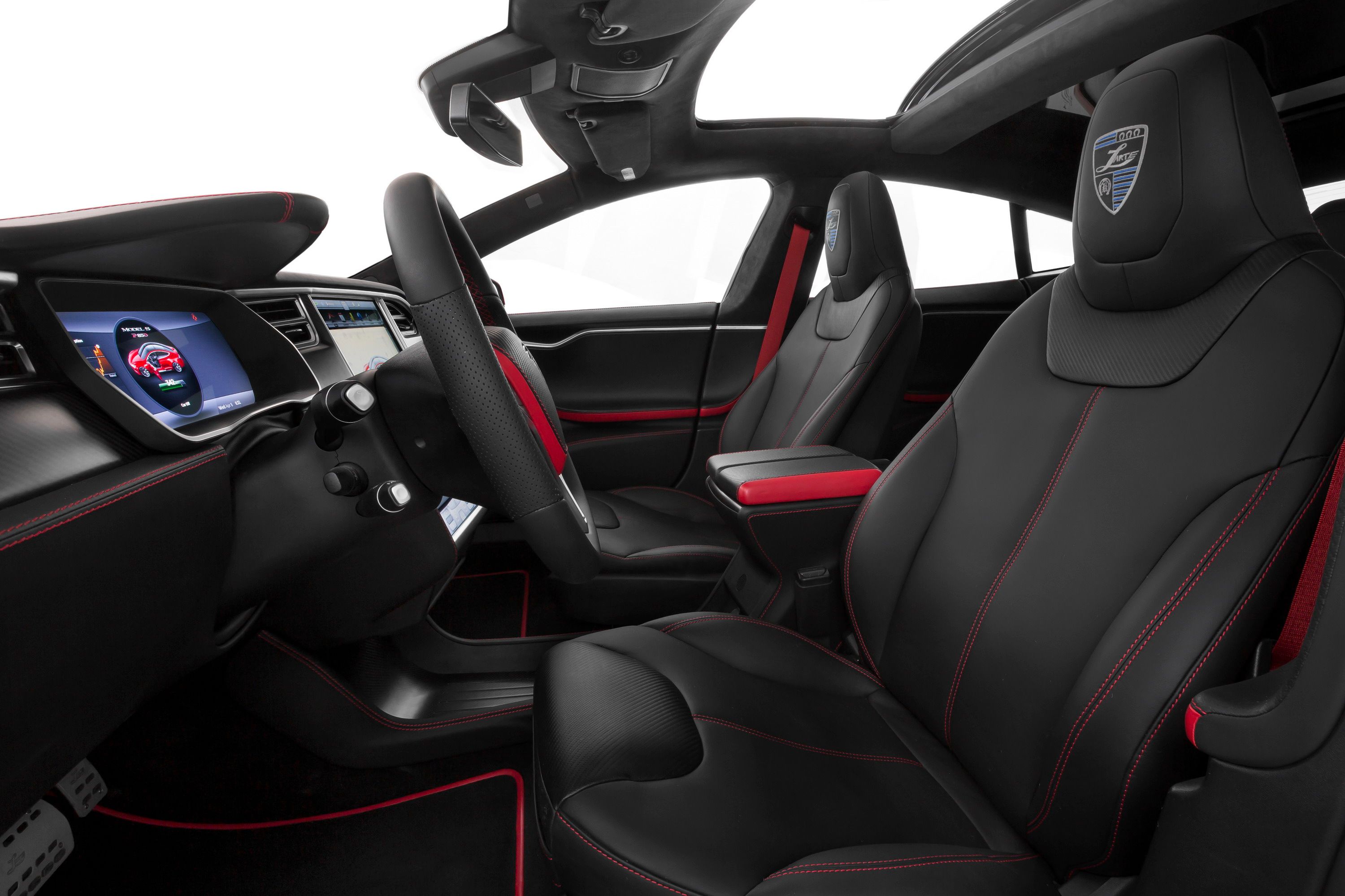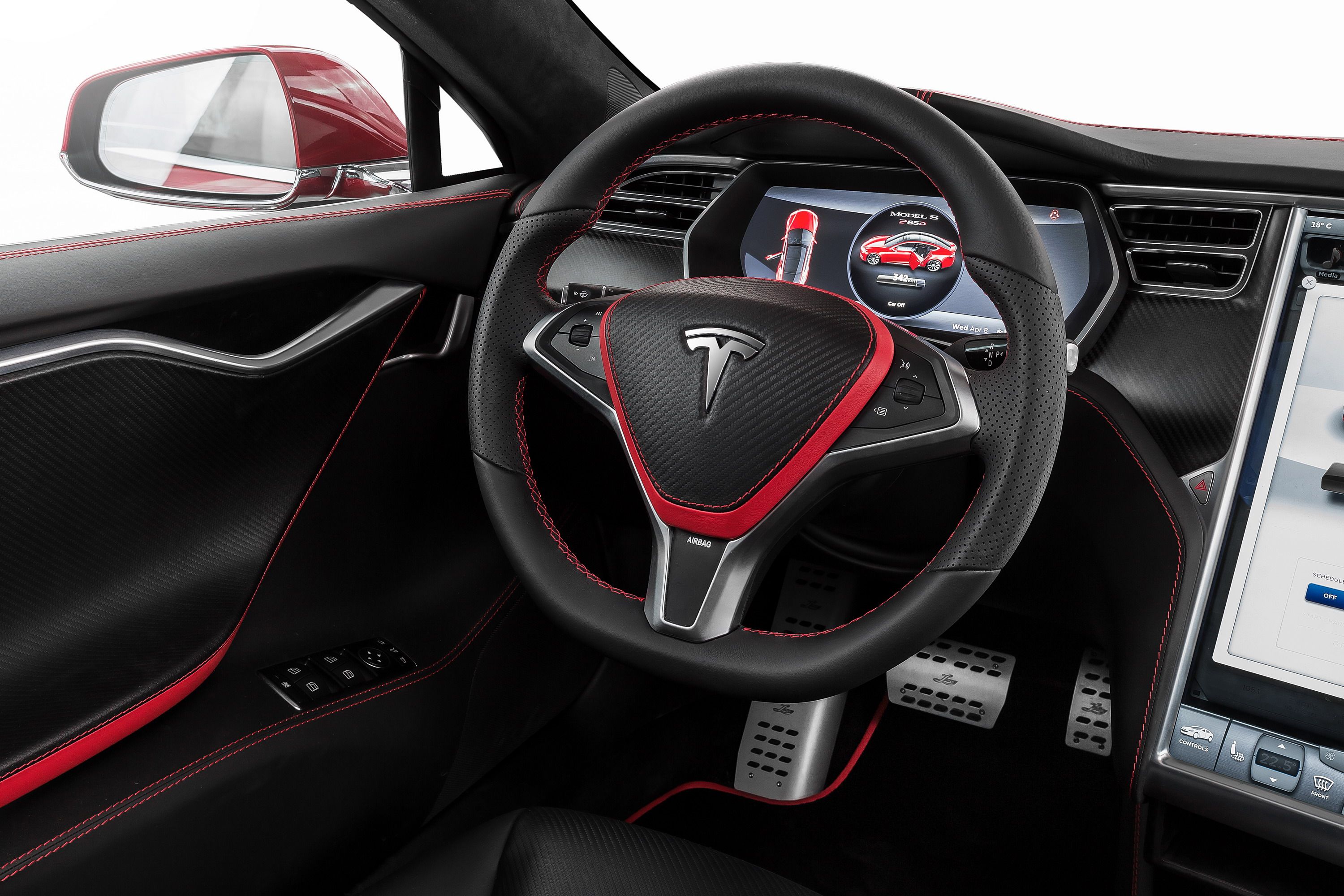While today's market is packed with tuning shops and aftermarket suppliers, there aren't many modified electric cars->ke1030 you can buy. That's mostly because there aren't many EVs on offer to begin with, but it's also because most shops would rather stick to conventional vehicles. As a result, the Tesla Model S,->ke3329 an electric sedan->ke142 of great potential, got very little attention, mainly from Saleen and Revozport, which didn't do much as to enhance its styling. That changed recently, as Larte Design, a custom kit builder known for upgrading Infiniti,->ke36 Lexus,->ke47 Mercedes-Benz->ke187 and Range Rover->ke469 vehicles, came up with a wild-looking package for the Model S.
Dubbed Elizabeta and designed as a tribute to famed inventor Nikola Tesla, the body kit adds "lightning-like clear lines" to the Model S. And while this might sound like fancy PR talk, it is not. Larte's Model S is unlike any other Tesla->ke1842 released as of 2015, featuring completely redesigned components that change its appearance quite dramatically. Making it that much more spectacular is that's so well integrated into the stock shell, it could easily pass as an official Tesla product. More good news comes from the fact that it is based on the outrageous P85D. Find out more about that in the review below.
Continue reading to learn more about the Tesla Model S Elizabeta By Larte Design.
2015 Tesla Model S Elizabeta By Larte Design
- Make: Array
- Model: 2015 Tesla Model S Elizabeta By Larte Design
- Horsepower: 700
- [do not use] Vehicle Model: Array
Exterior
Tesla has a rear sleeper in the range-topping P85D, which is as powerful as a supercar->ke177 while looking as plain as an entry-level model. With its Elizabeta custom kit, Larte apparently focused on changing just that and giving the Model S an appearance that's suitable for its incredible output and off-the-line sprints. Fortunately, the package is not just about minor add-ons to the sedan's body, but consists of fully redesigned components crafted by the same recipe Larte Design used on gasoline-powered vehicles.
Nearly every detail of the front fascia has been revised. The rounded contours of the standard Model S have been replaced by angular, more aggressive lines. The oval grille was remodeled into a more intricate design, lengthened toward the edges of the bumper, and received carbon-fiber components. Down below, the apron gained larger air vents with a honeycomb grille, and a three-piece splitter that adds even more aggressiveness to the car.
The headlamps appear to have retained their original shape, but the fascia's new, sharper lines place them in a different perspective. Larte also modified the front hood, which no longer extends into the grille. If I didn't know any better, I'd think Tesla just launched a second-generation Model S. It's that good!
And I've only covered the front end.
The fun continues around back, where Larte reshaped everything below the trunklid. The lid itself sports stronger lines and a carbon-fiber insert with a fine Larte badge instead of the usual chrome piece. The most important details, however, lie in the bumper, which received vertical vents on each side, and, more importantly, a cool, carbon-fiber diffuser. Yup, Larte did the P85D justice by adding a design piece that's mandatory for all performance cars.->ke506
The profile of the Elisabeta showcases fewer changes, but the effect is rather dramatic thanks to the blacked-out front fender inserts and the larger, black-painted, forged wheels. The side skirts, although unchanged, are now color-keyed from the front wheel arches toward the rear doors.
Forget about Saleen's Foursixteen, this is by far the most aggressive-looking Model S ever crafted!
And it's innovative too, as Larte used composite materials based on basalt fiber on top of the carbon-fiber-reinforced plastic (CFRP) utilized in the body kit. Made from fine fibers of basalt (yup, I'm talking about the volcanic rock, the material is similar to carbon-fiber and fiberglass, having better physicomechanical properties than fiberglass, but being significantly cheaper than carbon-fiber. Basalt fiber has higher impact resistance and toughness, as well as shock-absorbing properties, which not only make the Model S lighter, but safer in case of a crash as well. The material is also resistant to moisture, salt solutions and acids. Larte says basalt fiber is the future, and if the Elizabeta is how the future looks like, I have to agree.
Interior
Larte didn't share much info as to what changed inside the cabin, but the photos reveal a sporty layout with red accents complementing the black interior. Highlights include custom pedals and footrest, and Larte-branded headrests for both the front and rear seats. Granted, interior changes aren't as radical as those on the outside, but, knowing Larte, more options should be available upon request.
Drivetrain
There's no word on drivetrain modifications, which means the Elizabeta features the Model S P85D's standard specifications. But no need to be disappointed there, because the P85D lays 691 horsepower and 687 pound-feet of twist to the pavement thanks to its twin-motor configuration. The massive amount of power and the AWD layout means the sedan can sprint from 0 to 60 mph in only 3.2 seconds, making it quicker than any other production sedan and an array of full-fledged sports cars. Heck, it's only two tenths of a second slower than the new Ferrari 488 GTB. Top speed is "only" 155 mph, but we need to keep in mind the Tesla is, after all, an electric vehicle.
The Elizabeta also benefits from the P85D's updated range, meaning it can travel up to 275 miles on a single charge. That's 10 miles more than the rear-wheel-drive P85 model.
But while the specs of the drivetrain remained factory-stock, it did receive an "integrated electronic sound," which Larte describes as "a worthy soundtrack" to match the Model S' new great looks. As you might have already guessed, the Elizabeta is no longer a near-silent sedan, but one that roars as a gasoline-powered, high-performance vehicle would. Larte argues that the added sound also increases safety on the road, as other drivers will now be able to hear the Model S approaching.
While I'm no fan of digitally enhanced engine sounds, or what BMW,->ke178 Lexus, and Ford->ke31 did with some of their cars, I can definitely see the use of Larte's added "electronic sound." Still, customers should have the option to remove it should they want their Elizabeta as silent as a standard Model S.
Prices
Larte Design has yet to release pricing for the Elizabeta, which is likely only available upon request and after the precise specifications of the build have been decided. If I were to take a guess, I'd say the Elizabeta would fetch well in excess of $150,000, including the base P85D car, which is priced from $120,170 before options.
Competition
Tesla Model S P85D
Elizabeta's main competitors is obviously the stock Model S P85D. The identical drivetrain means customers get the same specs, only having to decide between having the standard design or Larte's enhanced, more aggressive body kit. Naturally, many buyers will still prefer the more traditional styling, even though the Model S has yet to receive an exterior update since its introduction in 2012.
Pricing is also a key factor here, as Larte's version is likely significantly more expensive than the stock P85D. Not that the standard car is a bargain at $120,170...
Read more about the Tesla Model S P85D in our full review here.
Saleen Tesla Model S Foursixteen
Much like Larte Design, Saleen ->ke76developed its very own body kit for the Model S, rolling out its first ever electric vehicle. But unlike Larte's, Saleen's take is significantly milder on the outside, as the sedan kept its rounded front fascia. Modifications include a much smaller grille up front, a more aggressive hood design, added air vents, a rear difusser, and a large spoiler atop the decklid. The aero bits are functional and increase downforce at higher speeds.
Interior changes include new leather and Alcantara upholstery, carbon-fiber inserts, a revised center console, and a bunch of Saleen badges. This is where I think Saleen's Model S is more attractive than Larte's near-standard offering.
The drivetrain remained unchanged, meaning the Saleen Model S can also be had with 691 horsepower. However, the sedan should handle better than the stock model thanks to Saleen's revised suspension system. Pricing starts from $152,000 for the rear-wheel-drive P85-based model, including the price of the stock Model S.
Find out more about Saleen's EV sedan in our review here.
Audi R8 e-tron
The R8->ke1440 e-tron may lack the Model S' ability to seat up to seven people, but if performance is what you're looking for, this German electric supercar is an option you might consider. Introduced for the 2016 model year after years of development and delays, the R8 e-tron is based on the second-generation R8, with which it shares most of its styling features.
Motivated by two electric motors powered by a large, T-shaped, 49-kWh battery, the R8 e-tron benefits from 455 horsepower and a whopping 679 pound-feet of torque. It needs 3.9 seconds to hit 62 mph from a standing start, while its top speed is electronically limited to 155 mph. Granted, it's not as fast as a Model S, but it's the closest thing you can get to a P85D that has an electric drivetrain.
Read our full Audi R8 e-tron review here.
Conclusion
On the outside, the Elizabeta is stunning to look at and comes to prove that an electric sedan can become a menacing vehicle when modified by the right people. With Tesla Motors choosing to focus its facelifts on software and drivetrain updates, Larte's body kit fills a gap Elon Musk has apparently yet to consider: the visual update. And given a factory update will probably be milder than the one seen above, Larte has just become the best option for Model S enthusiasts in need of a mean-looking sedan.

